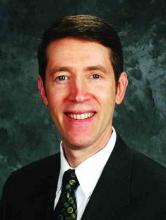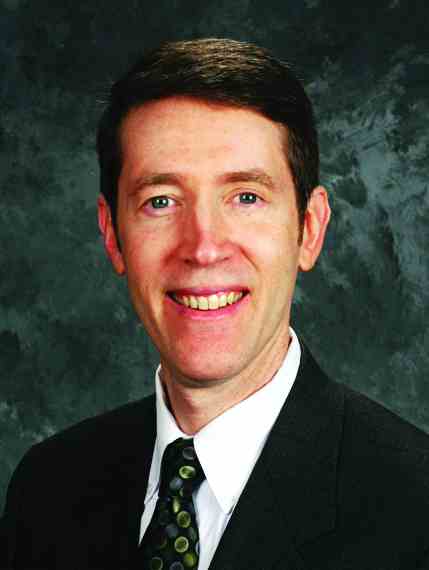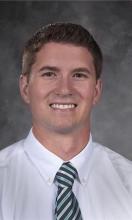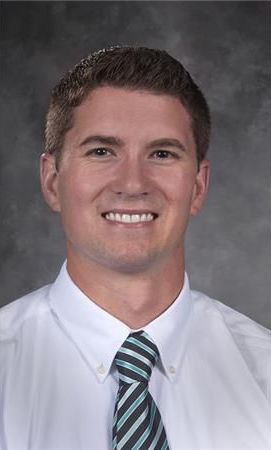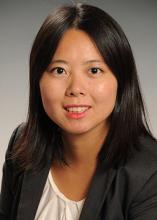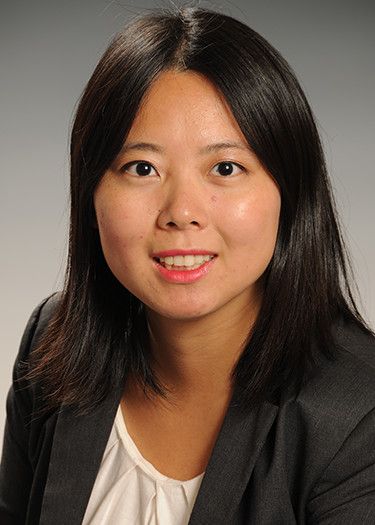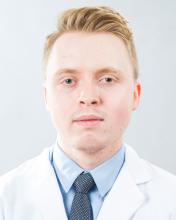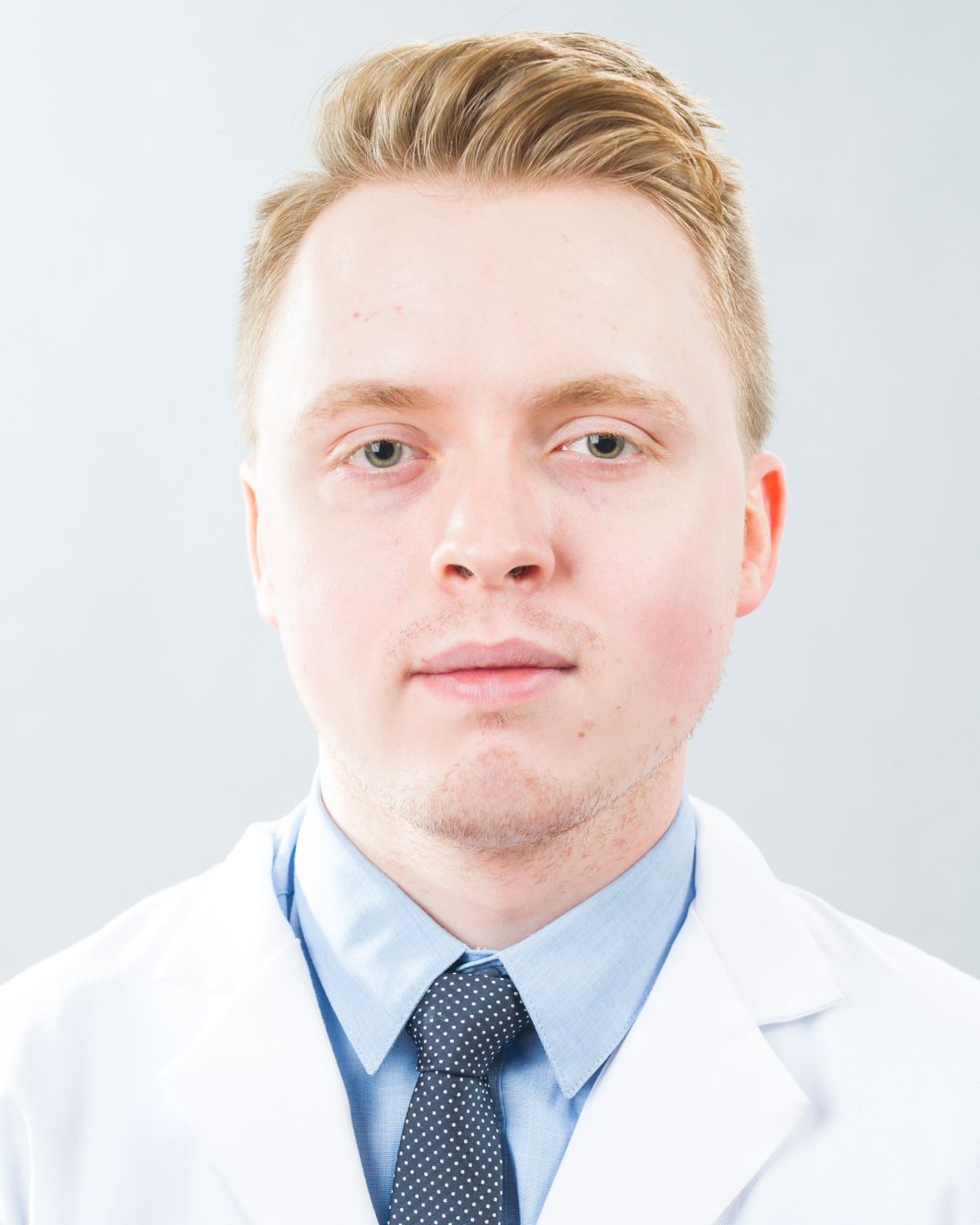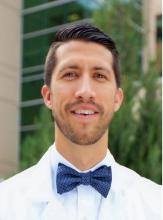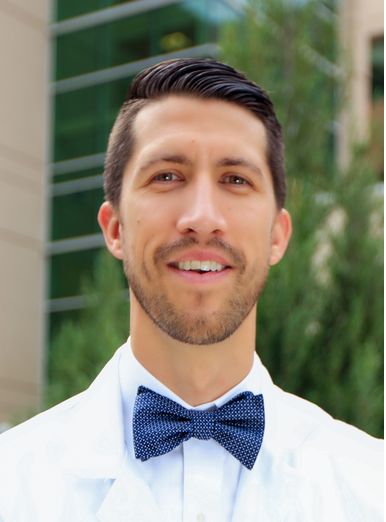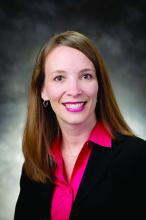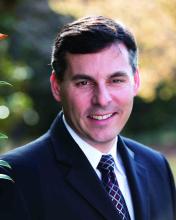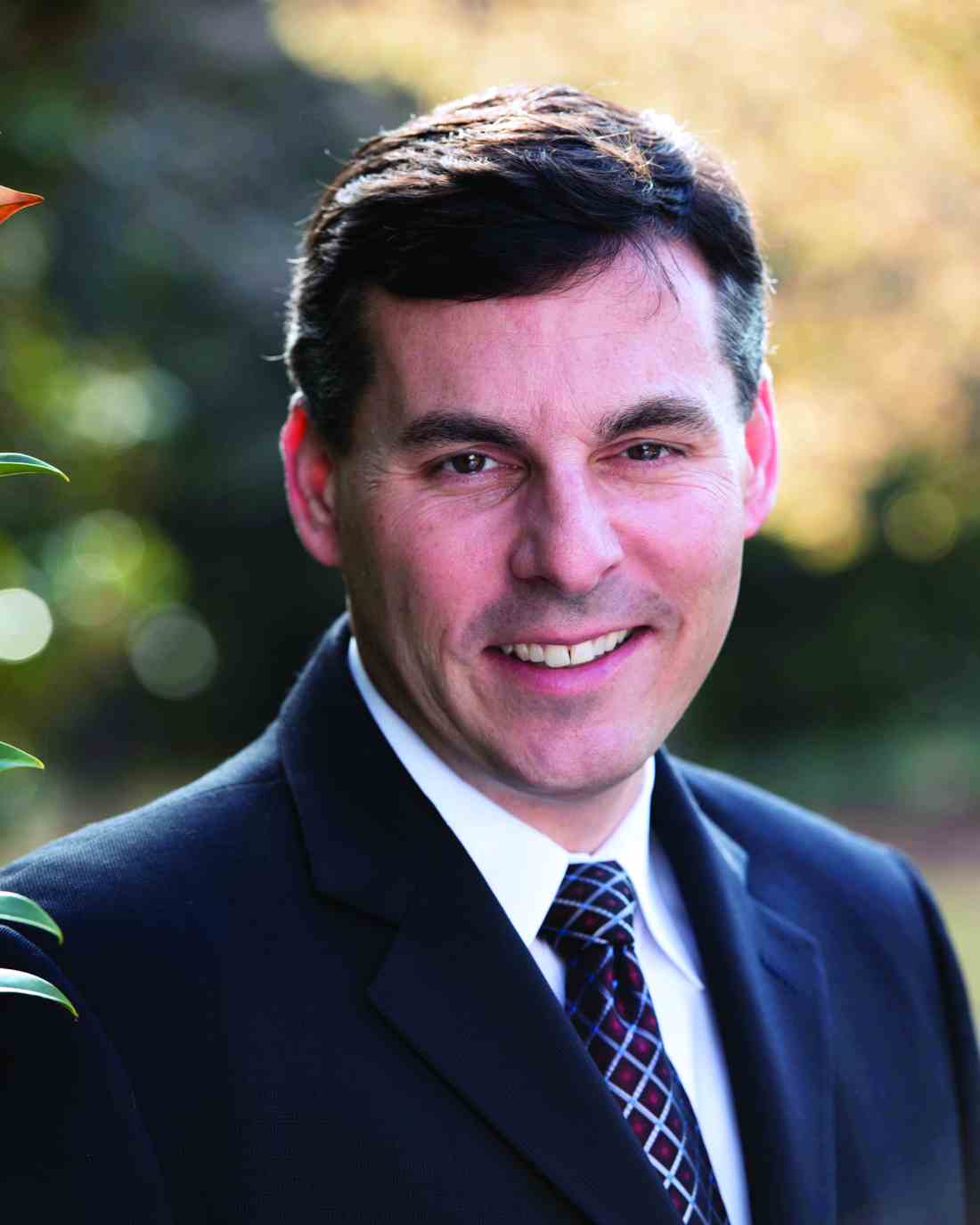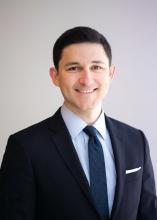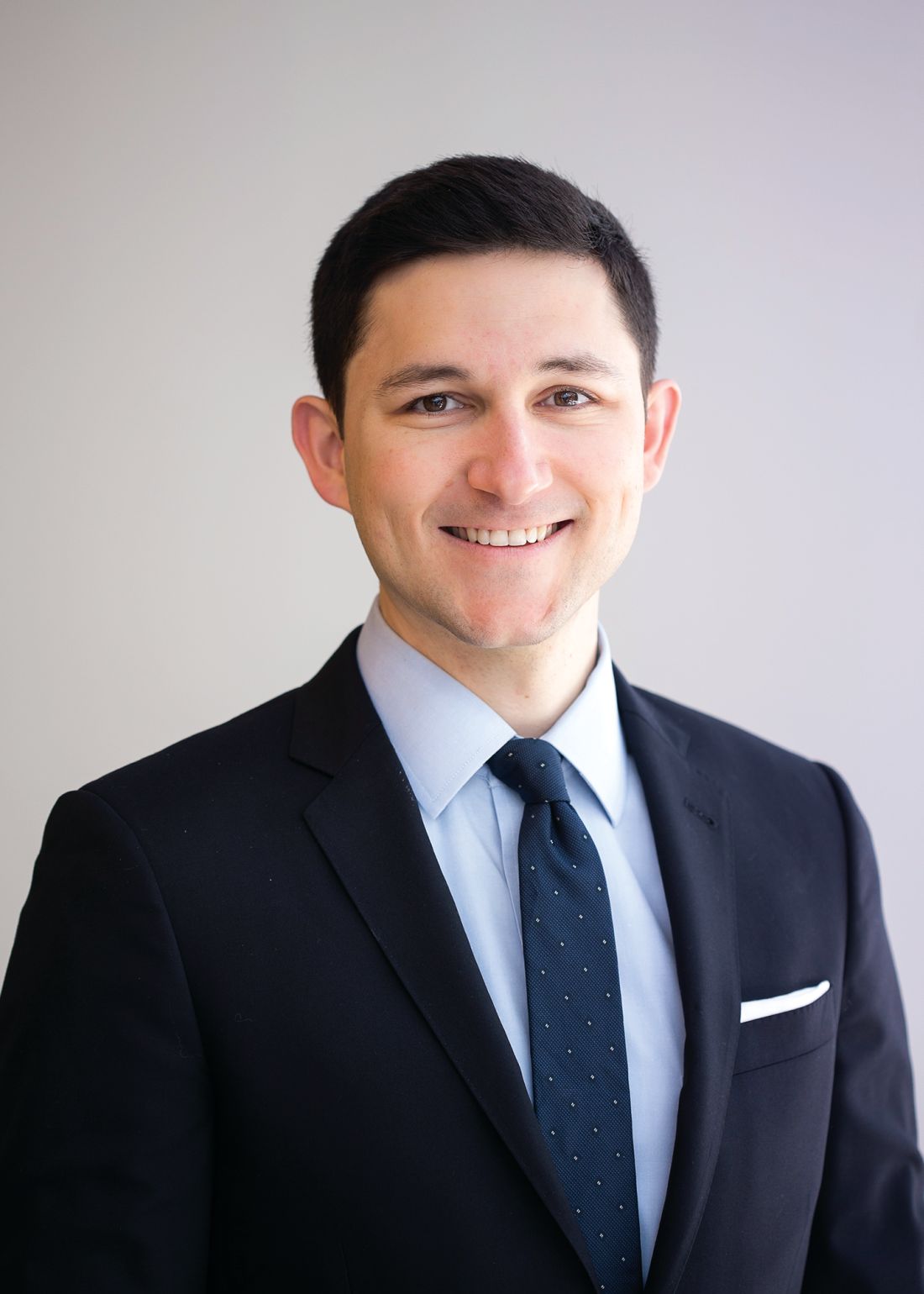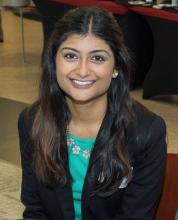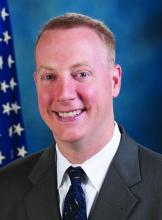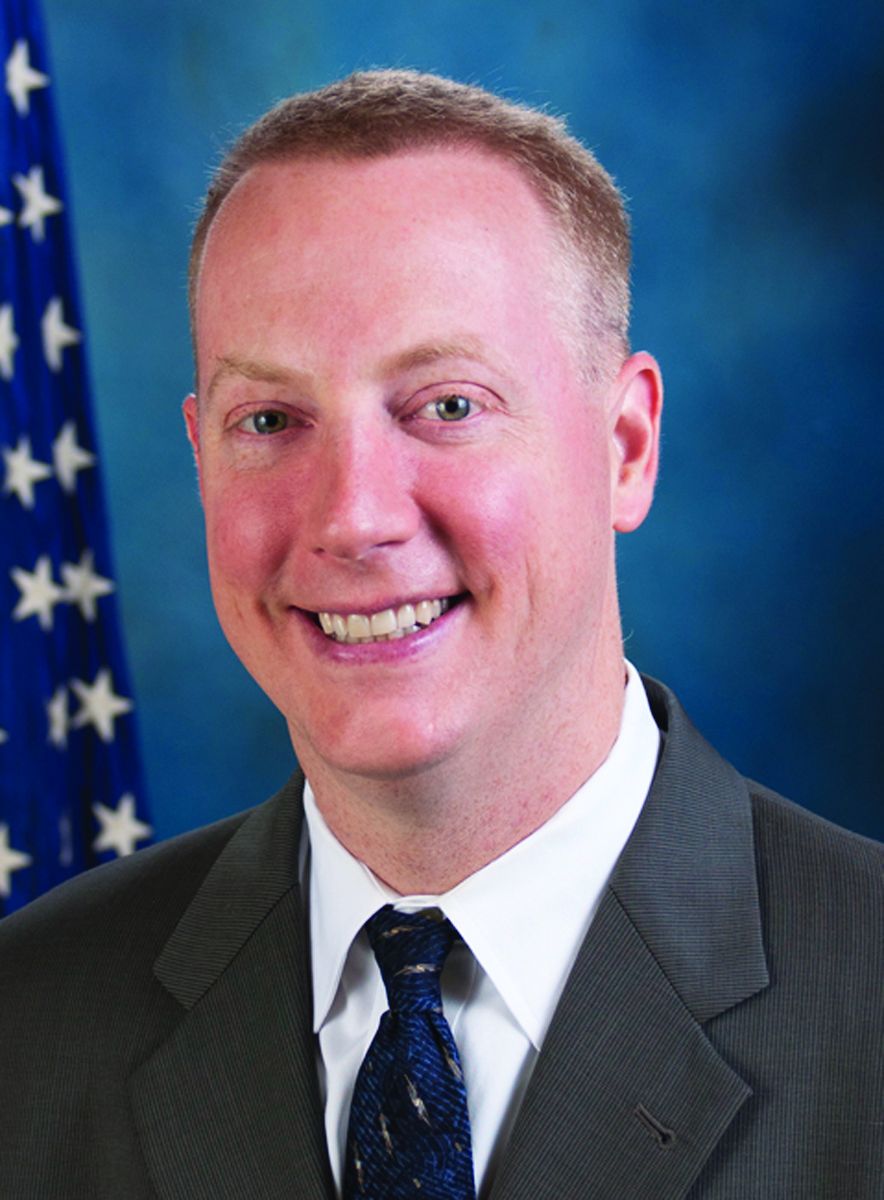User login
Thinking about productivity: Survey data 2017
The 2017 MGMA survey data on compensation and productivity were released last June. While the numbers aren’t surprising, reviewing them always gets me thinking about factors that influence reasonable expectations for compensation and productivity in any individual hospitalist group.
The data were collected in early 2017, reflecting work done in 2016, and show a national median hospitalist compensation for internal medicine physicians of $284,000, up from $278,500 the year before. Since MGMA added a hospitalist category to the survey, compensation has been growing significantly faster than inflation, even though productivity has been essentially flat. I’ve always thought that the high demand for hospitalists, which isn’t letting up much, in the face of a limited supply is probably the most significant force causing hospitalist compensation to rise faster than in most other specialties.
The survey shows a median of 2,114 billed encounters and 4,159 wRVUs (work relative value units) generated per internal medicine hospitalist annually (family medicine hospitalists are reported separately). These numbers have been pretty stable for many years.
Whether it is reasonable to expect hospitalists in your group to produce at this level is a question that can unspool into a lengthy conversation. Below are several assertions I regularly hear others make about productivity, and following each is my commentary.
“Surveys show only what is most typical, not what is optimal. Our field suffers from concerning levels of burnout, essentially proving that median levels of productivity shown in surveys is too high.”
I share this concern, but this is a complicated issue. You’ll have to make up your own mind regarding how significantly workload influences hospitalist burnout. But the modest amount of published research on this topic suggests that workload itself isn’t as strongly associated with burnout as you might think. I’m certain workload does play a role, but other factors such as “occupational solidarity” seem to matter more. Lowering workload in some settings might be appropriate, but without other interventions may not influence work-related stress and burnout as much as might be hoped.
“Surveys don’t capture unbillable activities (‘unbillable wRVUs’), so are a poor frame of reference when thinking about productivity expectations in our own group.”
It’s true that hospitalists do a lot of work that isn’t captured in wRVUs. My work with many groups around the country suggests the amount and difficulty of this unbillable work is reasonably similar across most groups. We all spend time with handoffs, managing paperwork such as charge capture and completing forms, responding to a rapid response call that doesn’t lead to a billable charge, etc. The average amount of this sort of work is built into the survey. Clearly some groups are outliers with meaningfully more unbillable work than elsewhere, but that can be a difficult or impossible thing to prove.
“My hospital has unique barriers to efficiency/productivity, so it’s more difficult to achieve levels of productivity shown in surveys.”
This is another way of expressing the previous issue. To support this assertion hospitalists will mention that it is tougher to be productive at their hospital because they’re a referral center with unusually sick and complicated patients; they teach trainees in addition to clinical care; and/or their patients and families are unusually demanding, so they take much more time than at other places.
Yet for each of these issues I also hear the reverse argument regularly. Hospitalists point out that because they’re a small hospital (not a referral center) they lack the support of other specialties so must manage all aspects of care themselves; they don’t have residents to help do some of the work; and their patients are unsophisticated and lack social support. For these reasons, the argument goes, they shouldn’t be expected to achieve levels of productivity shown in surveys.
I have worked with hospitalist groups that I am convinced do face unusual barriers to efficiency that are meaningful enough that unless the barriers can be addressed, I think productivity expectations should be lower than survey benchmarks. For example, in most academic medical centers and a very small number of nonacademic hospitals, only the attending physician writes orders; consulting doctors don’t. This means that the attending hospitalist must check a patient’s chart repeatedly through the day just to see if the consultant proposed even small things like ordering a routine lab test, advancing the diet, etc., that the hospitalist must order.
A separate daytime admitter shift is a modest barrier to efficiency that is so common it is clearly factored into survey results. Most hospitalist groups with more than about five doctors working daily have one doctor (or more than one in large groups) manage admissions while the rest round and are protected from admissions. While this may have a number of benefits, overall hospitalist efficiency isn’t one of them. It means that all patients, not just those admitted at night, will have a handoff from the admitting provider to a new attending for the first rounding visit. This new attending will spend additional time becoming familiar with the patient – time that wouldn’t be necessary had that doctor performed the admission visit herself.
“Our hospitalist group is always being asked to take on more duties, such as managing med reconciliation, taking referrals from an additional PCP group, or serving as admitting and attending physician for patients previously admitted by a different specialty (which now serves in the consultant role). For this reason, it’s necessary to steadily lower hospitalist productivity expectations over time.”
A hospitalist today probably spends a quarter of the day doing things I didn’t have to do at the outset of my career in the 1980s. So my impulse is to agree that as the breadth of our responsibilities expands, expected wRVU productivity should fall. But surveys over the last 15-20 years don’t show this happening, and the pressure to maintain productivity levels isn’t likely to let up. Rather than generating fewer wRVUs (seeing fewer patients), hospital medicine, like health care as a whole, faces the challenge of continually improving our efficiency.
“Surveys are only one frame of reference for determining expectations at my particular hospitalist group. There are other factors to consider as well.”
This is absolutely true. There may be many reasons for your group to set expectations that are meaningfully different from survey figures. Just make sure your rationale for doing so is well considered and effectively communicated to other stakeholders, such as those in finance and organizational leadership at your organization.
Dr. Nelson has had a career in clinical practice as a hospitalist starting in 1988. He is cofounder and past president of SHM, and principal in Nelson Flores Hospital Medicine Consultants. He is codirector for SHM’s practice management courses. [email protected]
The 2017 MGMA survey data on compensation and productivity were released last June. While the numbers aren’t surprising, reviewing them always gets me thinking about factors that influence reasonable expectations for compensation and productivity in any individual hospitalist group.
The data were collected in early 2017, reflecting work done in 2016, and show a national median hospitalist compensation for internal medicine physicians of $284,000, up from $278,500 the year before. Since MGMA added a hospitalist category to the survey, compensation has been growing significantly faster than inflation, even though productivity has been essentially flat. I’ve always thought that the high demand for hospitalists, which isn’t letting up much, in the face of a limited supply is probably the most significant force causing hospitalist compensation to rise faster than in most other specialties.
The survey shows a median of 2,114 billed encounters and 4,159 wRVUs (work relative value units) generated per internal medicine hospitalist annually (family medicine hospitalists are reported separately). These numbers have been pretty stable for many years.
Whether it is reasonable to expect hospitalists in your group to produce at this level is a question that can unspool into a lengthy conversation. Below are several assertions I regularly hear others make about productivity, and following each is my commentary.
“Surveys show only what is most typical, not what is optimal. Our field suffers from concerning levels of burnout, essentially proving that median levels of productivity shown in surveys is too high.”
I share this concern, but this is a complicated issue. You’ll have to make up your own mind regarding how significantly workload influences hospitalist burnout. But the modest amount of published research on this topic suggests that workload itself isn’t as strongly associated with burnout as you might think. I’m certain workload does play a role, but other factors such as “occupational solidarity” seem to matter more. Lowering workload in some settings might be appropriate, but without other interventions may not influence work-related stress and burnout as much as might be hoped.
“Surveys don’t capture unbillable activities (‘unbillable wRVUs’), so are a poor frame of reference when thinking about productivity expectations in our own group.”
It’s true that hospitalists do a lot of work that isn’t captured in wRVUs. My work with many groups around the country suggests the amount and difficulty of this unbillable work is reasonably similar across most groups. We all spend time with handoffs, managing paperwork such as charge capture and completing forms, responding to a rapid response call that doesn’t lead to a billable charge, etc. The average amount of this sort of work is built into the survey. Clearly some groups are outliers with meaningfully more unbillable work than elsewhere, but that can be a difficult or impossible thing to prove.
“My hospital has unique barriers to efficiency/productivity, so it’s more difficult to achieve levels of productivity shown in surveys.”
This is another way of expressing the previous issue. To support this assertion hospitalists will mention that it is tougher to be productive at their hospital because they’re a referral center with unusually sick and complicated patients; they teach trainees in addition to clinical care; and/or their patients and families are unusually demanding, so they take much more time than at other places.
Yet for each of these issues I also hear the reverse argument regularly. Hospitalists point out that because they’re a small hospital (not a referral center) they lack the support of other specialties so must manage all aspects of care themselves; they don’t have residents to help do some of the work; and their patients are unsophisticated and lack social support. For these reasons, the argument goes, they shouldn’t be expected to achieve levels of productivity shown in surveys.
I have worked with hospitalist groups that I am convinced do face unusual barriers to efficiency that are meaningful enough that unless the barriers can be addressed, I think productivity expectations should be lower than survey benchmarks. For example, in most academic medical centers and a very small number of nonacademic hospitals, only the attending physician writes orders; consulting doctors don’t. This means that the attending hospitalist must check a patient’s chart repeatedly through the day just to see if the consultant proposed even small things like ordering a routine lab test, advancing the diet, etc., that the hospitalist must order.
A separate daytime admitter shift is a modest barrier to efficiency that is so common it is clearly factored into survey results. Most hospitalist groups with more than about five doctors working daily have one doctor (or more than one in large groups) manage admissions while the rest round and are protected from admissions. While this may have a number of benefits, overall hospitalist efficiency isn’t one of them. It means that all patients, not just those admitted at night, will have a handoff from the admitting provider to a new attending for the first rounding visit. This new attending will spend additional time becoming familiar with the patient – time that wouldn’t be necessary had that doctor performed the admission visit herself.
“Our hospitalist group is always being asked to take on more duties, such as managing med reconciliation, taking referrals from an additional PCP group, or serving as admitting and attending physician for patients previously admitted by a different specialty (which now serves in the consultant role). For this reason, it’s necessary to steadily lower hospitalist productivity expectations over time.”
A hospitalist today probably spends a quarter of the day doing things I didn’t have to do at the outset of my career in the 1980s. So my impulse is to agree that as the breadth of our responsibilities expands, expected wRVU productivity should fall. But surveys over the last 15-20 years don’t show this happening, and the pressure to maintain productivity levels isn’t likely to let up. Rather than generating fewer wRVUs (seeing fewer patients), hospital medicine, like health care as a whole, faces the challenge of continually improving our efficiency.
“Surveys are only one frame of reference for determining expectations at my particular hospitalist group. There are other factors to consider as well.”
This is absolutely true. There may be many reasons for your group to set expectations that are meaningfully different from survey figures. Just make sure your rationale for doing so is well considered and effectively communicated to other stakeholders, such as those in finance and organizational leadership at your organization.
Dr. Nelson has had a career in clinical practice as a hospitalist starting in 1988. He is cofounder and past president of SHM, and principal in Nelson Flores Hospital Medicine Consultants. He is codirector for SHM’s practice management courses. [email protected]
The 2017 MGMA survey data on compensation and productivity were released last June. While the numbers aren’t surprising, reviewing them always gets me thinking about factors that influence reasonable expectations for compensation and productivity in any individual hospitalist group.
The data were collected in early 2017, reflecting work done in 2016, and show a national median hospitalist compensation for internal medicine physicians of $284,000, up from $278,500 the year before. Since MGMA added a hospitalist category to the survey, compensation has been growing significantly faster than inflation, even though productivity has been essentially flat. I’ve always thought that the high demand for hospitalists, which isn’t letting up much, in the face of a limited supply is probably the most significant force causing hospitalist compensation to rise faster than in most other specialties.
The survey shows a median of 2,114 billed encounters and 4,159 wRVUs (work relative value units) generated per internal medicine hospitalist annually (family medicine hospitalists are reported separately). These numbers have been pretty stable for many years.
Whether it is reasonable to expect hospitalists in your group to produce at this level is a question that can unspool into a lengthy conversation. Below are several assertions I regularly hear others make about productivity, and following each is my commentary.
“Surveys show only what is most typical, not what is optimal. Our field suffers from concerning levels of burnout, essentially proving that median levels of productivity shown in surveys is too high.”
I share this concern, but this is a complicated issue. You’ll have to make up your own mind regarding how significantly workload influences hospitalist burnout. But the modest amount of published research on this topic suggests that workload itself isn’t as strongly associated with burnout as you might think. I’m certain workload does play a role, but other factors such as “occupational solidarity” seem to matter more. Lowering workload in some settings might be appropriate, but without other interventions may not influence work-related stress and burnout as much as might be hoped.
“Surveys don’t capture unbillable activities (‘unbillable wRVUs’), so are a poor frame of reference when thinking about productivity expectations in our own group.”
It’s true that hospitalists do a lot of work that isn’t captured in wRVUs. My work with many groups around the country suggests the amount and difficulty of this unbillable work is reasonably similar across most groups. We all spend time with handoffs, managing paperwork such as charge capture and completing forms, responding to a rapid response call that doesn’t lead to a billable charge, etc. The average amount of this sort of work is built into the survey. Clearly some groups are outliers with meaningfully more unbillable work than elsewhere, but that can be a difficult or impossible thing to prove.
“My hospital has unique barriers to efficiency/productivity, so it’s more difficult to achieve levels of productivity shown in surveys.”
This is another way of expressing the previous issue. To support this assertion hospitalists will mention that it is tougher to be productive at their hospital because they’re a referral center with unusually sick and complicated patients; they teach trainees in addition to clinical care; and/or their patients and families are unusually demanding, so they take much more time than at other places.
Yet for each of these issues I also hear the reverse argument regularly. Hospitalists point out that because they’re a small hospital (not a referral center) they lack the support of other specialties so must manage all aspects of care themselves; they don’t have residents to help do some of the work; and their patients are unsophisticated and lack social support. For these reasons, the argument goes, they shouldn’t be expected to achieve levels of productivity shown in surveys.
I have worked with hospitalist groups that I am convinced do face unusual barriers to efficiency that are meaningful enough that unless the barriers can be addressed, I think productivity expectations should be lower than survey benchmarks. For example, in most academic medical centers and a very small number of nonacademic hospitals, only the attending physician writes orders; consulting doctors don’t. This means that the attending hospitalist must check a patient’s chart repeatedly through the day just to see if the consultant proposed even small things like ordering a routine lab test, advancing the diet, etc., that the hospitalist must order.
A separate daytime admitter shift is a modest barrier to efficiency that is so common it is clearly factored into survey results. Most hospitalist groups with more than about five doctors working daily have one doctor (or more than one in large groups) manage admissions while the rest round and are protected from admissions. While this may have a number of benefits, overall hospitalist efficiency isn’t one of them. It means that all patients, not just those admitted at night, will have a handoff from the admitting provider to a new attending for the first rounding visit. This new attending will spend additional time becoming familiar with the patient – time that wouldn’t be necessary had that doctor performed the admission visit herself.
“Our hospitalist group is always being asked to take on more duties, such as managing med reconciliation, taking referrals from an additional PCP group, or serving as admitting and attending physician for patients previously admitted by a different specialty (which now serves in the consultant role). For this reason, it’s necessary to steadily lower hospitalist productivity expectations over time.”
A hospitalist today probably spends a quarter of the day doing things I didn’t have to do at the outset of my career in the 1980s. So my impulse is to agree that as the breadth of our responsibilities expands, expected wRVU productivity should fall. But surveys over the last 15-20 years don’t show this happening, and the pressure to maintain productivity levels isn’t likely to let up. Rather than generating fewer wRVUs (seeing fewer patients), hospital medicine, like health care as a whole, faces the challenge of continually improving our efficiency.
“Surveys are only one frame of reference for determining expectations at my particular hospitalist group. There are other factors to consider as well.”
This is absolutely true. There may be many reasons for your group to set expectations that are meaningfully different from survey figures. Just make sure your rationale for doing so is well considered and effectively communicated to other stakeholders, such as those in finance and organizational leadership at your organization.
Dr. Nelson has had a career in clinical practice as a hospitalist starting in 1988. He is cofounder and past president of SHM, and principal in Nelson Flores Hospital Medicine Consultants. He is codirector for SHM’s practice management courses. [email protected]
PHM17 session summary: Career Development (K Award) grants
Session
Career Development (K Award) grants: What are they, why should I apply, and how do I get funded?
Presenters
Christopher Bonafide, MD, MSCE; Patrick Brady, MD, MS; Kavita Parikh, MD, MSHS; Raj Srivastava, MD, MPH, SFHM; Derek Williams, MD, MPH
Session Summary
Pediatric hospital medicine, in its relative infancy, is attracting a cohort of academicians dedicated to advancing the care of hospitalized children. While other pediatric subspecialties have long reserved a significant proportion of fellowship training for research, pediatric hospitalist research has instead developed from the work of scholarly pioneers in the industry.
More colloquially known as K Awards, NIH Career Development Awards exist to financially support early-career clinical, translational, and basic science investigators through a closely mentored career development and research plan. The result? A mutually beneficial initiative lasting 3-5 years aligning the interests of the early-career investigator, hosting institution, and NIH. The realm of grant funding is confusing and can be intimidating, particularly for early-career investigators in a rapidly growing field of practice. Presenters at this session addressed the stigma of applying for K awards head on.
Who should apply for an NIH Career Development Award?
Competitive applicants for a Career Development Award are ideally interested in embarking on a career dedicated to research of some type, although exactly what that entails can and certainly may change over time.
What does the NIH Career Development Award provide?
The award funds a significant portion of your salary to provide protected time dedicated to your research and career development. Removing this financial barrier allows the investigator to become fully immersed in maturation as an independent investigator. The presenters were quick to caution that applicants (along with department and division chairs) should be aware that the award does not cover your entire salary; early-career investigators truly need dedication from their department and/or division to be successful.
Why apply for an NIH Career Development Award?
Clinical, translational, and basic science research takes time to complete, and the skills needed to be a successful investigator are not intuitive. Rather, they require close mentorship and practice. A career development award organizes and prioritizes an early-career investigator’s approach to obtaining research independence. Applying for an NIH Career Development Award helps identify the applicant’s experiential and knowledge gaps and, more importantly, develops a plan for how these deficits will be addressed over the course of the research project. This formative process ideally allows the early-career investigator to be more competitive in seeking larger grant funding.
Interested in pursuing a career development award? Dr. Bonafide and Dr. Srivastava offered the valuable advice that an applicant’s proposed research is only part of the equation for funding success. Equally important is your ability to identify your weaknesses as they pertain to research (and how you will address these weaknesses) as well as to find your mentorship team. You and your fellow awardees should surround yourselves with mentors who will address specific needs, which, in some circumstances, may require creativity and collaboration to augment the experience gained from others.
Key takeaway for PHM
As we recognize the growing complexities of caring for the hospitalized child, opportunities for clinical, translational, and basic science are expanding rapidly. Embracing the benefits of formalizing your research training early can lead to a successful and satisfying academic career in the long term.
Dr. Morrison is a Pediatric Hospital Medicine Fellow at Johns Hopkins All Children’s Hospital, St. Petersburg, Fla.
Session
Career Development (K Award) grants: What are they, why should I apply, and how do I get funded?
Presenters
Christopher Bonafide, MD, MSCE; Patrick Brady, MD, MS; Kavita Parikh, MD, MSHS; Raj Srivastava, MD, MPH, SFHM; Derek Williams, MD, MPH
Session Summary
Pediatric hospital medicine, in its relative infancy, is attracting a cohort of academicians dedicated to advancing the care of hospitalized children. While other pediatric subspecialties have long reserved a significant proportion of fellowship training for research, pediatric hospitalist research has instead developed from the work of scholarly pioneers in the industry.
More colloquially known as K Awards, NIH Career Development Awards exist to financially support early-career clinical, translational, and basic science investigators through a closely mentored career development and research plan. The result? A mutually beneficial initiative lasting 3-5 years aligning the interests of the early-career investigator, hosting institution, and NIH. The realm of grant funding is confusing and can be intimidating, particularly for early-career investigators in a rapidly growing field of practice. Presenters at this session addressed the stigma of applying for K awards head on.
Who should apply for an NIH Career Development Award?
Competitive applicants for a Career Development Award are ideally interested in embarking on a career dedicated to research of some type, although exactly what that entails can and certainly may change over time.
What does the NIH Career Development Award provide?
The award funds a significant portion of your salary to provide protected time dedicated to your research and career development. Removing this financial barrier allows the investigator to become fully immersed in maturation as an independent investigator. The presenters were quick to caution that applicants (along with department and division chairs) should be aware that the award does not cover your entire salary; early-career investigators truly need dedication from their department and/or division to be successful.
Why apply for an NIH Career Development Award?
Clinical, translational, and basic science research takes time to complete, and the skills needed to be a successful investigator are not intuitive. Rather, they require close mentorship and practice. A career development award organizes and prioritizes an early-career investigator’s approach to obtaining research independence. Applying for an NIH Career Development Award helps identify the applicant’s experiential and knowledge gaps and, more importantly, develops a plan for how these deficits will be addressed over the course of the research project. This formative process ideally allows the early-career investigator to be more competitive in seeking larger grant funding.
Interested in pursuing a career development award? Dr. Bonafide and Dr. Srivastava offered the valuable advice that an applicant’s proposed research is only part of the equation for funding success. Equally important is your ability to identify your weaknesses as they pertain to research (and how you will address these weaknesses) as well as to find your mentorship team. You and your fellow awardees should surround yourselves with mentors who will address specific needs, which, in some circumstances, may require creativity and collaboration to augment the experience gained from others.
Key takeaway for PHM
As we recognize the growing complexities of caring for the hospitalized child, opportunities for clinical, translational, and basic science are expanding rapidly. Embracing the benefits of formalizing your research training early can lead to a successful and satisfying academic career in the long term.
Dr. Morrison is a Pediatric Hospital Medicine Fellow at Johns Hopkins All Children’s Hospital, St. Petersburg, Fla.
Session
Career Development (K Award) grants: What are they, why should I apply, and how do I get funded?
Presenters
Christopher Bonafide, MD, MSCE; Patrick Brady, MD, MS; Kavita Parikh, MD, MSHS; Raj Srivastava, MD, MPH, SFHM; Derek Williams, MD, MPH
Session Summary
Pediatric hospital medicine, in its relative infancy, is attracting a cohort of academicians dedicated to advancing the care of hospitalized children. While other pediatric subspecialties have long reserved a significant proportion of fellowship training for research, pediatric hospitalist research has instead developed from the work of scholarly pioneers in the industry.
More colloquially known as K Awards, NIH Career Development Awards exist to financially support early-career clinical, translational, and basic science investigators through a closely mentored career development and research plan. The result? A mutually beneficial initiative lasting 3-5 years aligning the interests of the early-career investigator, hosting institution, and NIH. The realm of grant funding is confusing and can be intimidating, particularly for early-career investigators in a rapidly growing field of practice. Presenters at this session addressed the stigma of applying for K awards head on.
Who should apply for an NIH Career Development Award?
Competitive applicants for a Career Development Award are ideally interested in embarking on a career dedicated to research of some type, although exactly what that entails can and certainly may change over time.
What does the NIH Career Development Award provide?
The award funds a significant portion of your salary to provide protected time dedicated to your research and career development. Removing this financial barrier allows the investigator to become fully immersed in maturation as an independent investigator. The presenters were quick to caution that applicants (along with department and division chairs) should be aware that the award does not cover your entire salary; early-career investigators truly need dedication from their department and/or division to be successful.
Why apply for an NIH Career Development Award?
Clinical, translational, and basic science research takes time to complete, and the skills needed to be a successful investigator are not intuitive. Rather, they require close mentorship and practice. A career development award organizes and prioritizes an early-career investigator’s approach to obtaining research independence. Applying for an NIH Career Development Award helps identify the applicant’s experiential and knowledge gaps and, more importantly, develops a plan for how these deficits will be addressed over the course of the research project. This formative process ideally allows the early-career investigator to be more competitive in seeking larger grant funding.
Interested in pursuing a career development award? Dr. Bonafide and Dr. Srivastava offered the valuable advice that an applicant’s proposed research is only part of the equation for funding success. Equally important is your ability to identify your weaknesses as they pertain to research (and how you will address these weaknesses) as well as to find your mentorship team. You and your fellow awardees should surround yourselves with mentors who will address specific needs, which, in some circumstances, may require creativity and collaboration to augment the experience gained from others.
Key takeaway for PHM
As we recognize the growing complexities of caring for the hospitalized child, opportunities for clinical, translational, and basic science are expanding rapidly. Embracing the benefits of formalizing your research training early can lead to a successful and satisfying academic career in the long term.
Dr. Morrison is a Pediatric Hospital Medicine Fellow at Johns Hopkins All Children’s Hospital, St. Petersburg, Fla.
Identifying clinical pathways for injection drug–related infectious sequelae
Editor’s Note: The Society of Hospital Medicine’s (SHM’s) Physician in Training Committee launched a scholarship program in 2015 for medical students to help transform health care and revolutionize patient care. The program has been expanded for the 2017-18 year, offering two options for students to receive funding and engage in scholarly work during their first, second and third years of medical school. As a part of the longitudinal (18-month) program, recipients are required to write about their experience on a monthly basis.
It is not surprising that my medical school – home to a group of passionate thought leaders in health service and policy research, including the Dartmouth Atlas and Accountable Care Organization – required all first-year medical students to take a course called “health care delivery science.”
The course offered me the first glimpse into quality improvement. However, because of a lack of clinical context, much of the course remained theoretical until my clinical years. During the hospital medicine rotation, I took care of a 40-year old patient who was newly diagnosed with metastatic pancreatic cancer. It was challenging to deliver devastatingly bad news. The patient and family, however, were most confused and frustrated by the roles of different specialists and care providers, the purpose and scheduling of procedures, and diet arrangement. I wondered how I could make their experience better.
After several meetings with my mentor, Professor Jonathan Huntington, a hospitalist, MD-PhD researcher, and director of Care Coordination Center at Dartmouth-Hitchcock Medical Center (DHMC), we identified a research area that has rising interest, importance, and relevance to the rural New Hampshire population. It is about identifying a clinical pathway for injection drug–related infectious sequelae.
Because of the unique bio-socio-psycho needs of injection drug users, hospitalizations due to injection-related infection sequelae often contribute to increased length of stay, readmission rates, and expenses out of state and federal health care funding. Prolonged stays also result in the waste of tertiary care resources for nontertiary needs, underutilization of regional care resources such as community and critical access hospitals, and increased care burden, as most patients travel long distances to obtain care.
We will pilot and implement a clinical pathway in the medicine units and measure length of stay, readmission rate, patient satisfaction rating, infectious disease provider follow-up rate, and hospitalization cost. I appreciate the grant support from SHM, and am looking forward to working with Dr. Huntington and other providers at DHMC, as well as developing myself professionally.
Yun Li is an MD/MBA student attending Geisel School of Medicine and Tuck School of Business at Dartmouth, Hanover, N.H. She obtained her Bachelor of Arts degree from Hanover College double-majoring in Economics and Biological Chemistry. Ms. Li participated in research in injury epidemiology and genetics, and has conducted studies on traditional Tibetan medicine, rural health, health NGOs, and digital health. Her career interest is practicing hospital medicine and geriatrics as a clinician/administrator, either in the United States or China. Ms. Li is a student member of the Society of Hospital Medicine.
Editor’s Note: The Society of Hospital Medicine’s (SHM’s) Physician in Training Committee launched a scholarship program in 2015 for medical students to help transform health care and revolutionize patient care. The program has been expanded for the 2017-18 year, offering two options for students to receive funding and engage in scholarly work during their first, second and third years of medical school. As a part of the longitudinal (18-month) program, recipients are required to write about their experience on a monthly basis.
It is not surprising that my medical school – home to a group of passionate thought leaders in health service and policy research, including the Dartmouth Atlas and Accountable Care Organization – required all first-year medical students to take a course called “health care delivery science.”
The course offered me the first glimpse into quality improvement. However, because of a lack of clinical context, much of the course remained theoretical until my clinical years. During the hospital medicine rotation, I took care of a 40-year old patient who was newly diagnosed with metastatic pancreatic cancer. It was challenging to deliver devastatingly bad news. The patient and family, however, were most confused and frustrated by the roles of different specialists and care providers, the purpose and scheduling of procedures, and diet arrangement. I wondered how I could make their experience better.
After several meetings with my mentor, Professor Jonathan Huntington, a hospitalist, MD-PhD researcher, and director of Care Coordination Center at Dartmouth-Hitchcock Medical Center (DHMC), we identified a research area that has rising interest, importance, and relevance to the rural New Hampshire population. It is about identifying a clinical pathway for injection drug–related infectious sequelae.
Because of the unique bio-socio-psycho needs of injection drug users, hospitalizations due to injection-related infection sequelae often contribute to increased length of stay, readmission rates, and expenses out of state and federal health care funding. Prolonged stays also result in the waste of tertiary care resources for nontertiary needs, underutilization of regional care resources such as community and critical access hospitals, and increased care burden, as most patients travel long distances to obtain care.
We will pilot and implement a clinical pathway in the medicine units and measure length of stay, readmission rate, patient satisfaction rating, infectious disease provider follow-up rate, and hospitalization cost. I appreciate the grant support from SHM, and am looking forward to working with Dr. Huntington and other providers at DHMC, as well as developing myself professionally.
Yun Li is an MD/MBA student attending Geisel School of Medicine and Tuck School of Business at Dartmouth, Hanover, N.H. She obtained her Bachelor of Arts degree from Hanover College double-majoring in Economics and Biological Chemistry. Ms. Li participated in research in injury epidemiology and genetics, and has conducted studies on traditional Tibetan medicine, rural health, health NGOs, and digital health. Her career interest is practicing hospital medicine and geriatrics as a clinician/administrator, either in the United States or China. Ms. Li is a student member of the Society of Hospital Medicine.
Editor’s Note: The Society of Hospital Medicine’s (SHM’s) Physician in Training Committee launched a scholarship program in 2015 for medical students to help transform health care and revolutionize patient care. The program has been expanded for the 2017-18 year, offering two options for students to receive funding and engage in scholarly work during their first, second and third years of medical school. As a part of the longitudinal (18-month) program, recipients are required to write about their experience on a monthly basis.
It is not surprising that my medical school – home to a group of passionate thought leaders in health service and policy research, including the Dartmouth Atlas and Accountable Care Organization – required all first-year medical students to take a course called “health care delivery science.”
The course offered me the first glimpse into quality improvement. However, because of a lack of clinical context, much of the course remained theoretical until my clinical years. During the hospital medicine rotation, I took care of a 40-year old patient who was newly diagnosed with metastatic pancreatic cancer. It was challenging to deliver devastatingly bad news. The patient and family, however, were most confused and frustrated by the roles of different specialists and care providers, the purpose and scheduling of procedures, and diet arrangement. I wondered how I could make their experience better.
After several meetings with my mentor, Professor Jonathan Huntington, a hospitalist, MD-PhD researcher, and director of Care Coordination Center at Dartmouth-Hitchcock Medical Center (DHMC), we identified a research area that has rising interest, importance, and relevance to the rural New Hampshire population. It is about identifying a clinical pathway for injection drug–related infectious sequelae.
Because of the unique bio-socio-psycho needs of injection drug users, hospitalizations due to injection-related infection sequelae often contribute to increased length of stay, readmission rates, and expenses out of state and federal health care funding. Prolonged stays also result in the waste of tertiary care resources for nontertiary needs, underutilization of regional care resources such as community and critical access hospitals, and increased care burden, as most patients travel long distances to obtain care.
We will pilot and implement a clinical pathway in the medicine units and measure length of stay, readmission rate, patient satisfaction rating, infectious disease provider follow-up rate, and hospitalization cost. I appreciate the grant support from SHM, and am looking forward to working with Dr. Huntington and other providers at DHMC, as well as developing myself professionally.
Yun Li is an MD/MBA student attending Geisel School of Medicine and Tuck School of Business at Dartmouth, Hanover, N.H. She obtained her Bachelor of Arts degree from Hanover College double-majoring in Economics and Biological Chemistry. Ms. Li participated in research in injury epidemiology and genetics, and has conducted studies on traditional Tibetan medicine, rural health, health NGOs, and digital health. Her career interest is practicing hospital medicine and geriatrics as a clinician/administrator, either in the United States or China. Ms. Li is a student member of the Society of Hospital Medicine.
Student Hospitalist Scholars: The importance of shared mental models
Editor’s Note: The Society of Hospital Medicine’s (SHM’s) Physician in Training Committee launched a scholarship program in 2015 for medical students to help transform healthcare and revolutionize patient care. The program has been expanded for the 2017-18 year, offering two options for students to receive funding and engage in scholarly work during their first, second and third years of medical school. As a part of the program, recipients are required to write about their experience on a biweekly basis.
As I walk the University of Chicago Hospital observing various health care practitioners, I am continually impressed with the businesslike approach and productivity of each individual. The hospital staff is composed of highly intelligent, experienced, and talented physicians, but I have come to understand that in this large system it can be difficult to maintain quality patient care with both increased census and increased handoffs.
The research project I am working on focuses on shared mental models between the MICU and the general floor on what the most important factor of care is while they are on the floor, and to identify how prominent it is for shared mental models to be present between the transferring and receiving teams. After reading various papers, I am beginning to understand the various complexities present in translating information when transferring patients from any department onto the floor.
I continue to discuss these topics with my mentors, Dr. Vineet Arora and Dr. Juan Rojas, in order to appropriately categorize all survey responses and identify whether there is concordance between teams. I am glad to be able to rely on their insight concerning methods of coding the data, as well as what type of medical care each responding individual receives, and remaining on track with my estimated timeline of completion.
Past research supports the idea that increased times, distractions, and workloads in regard to handoffs result in potential errors, decreasing the quality of patient care and potentially resulting in worse patient outcomes. MICU patients are at a particular risk, since ineffective communication could lead to readmission, which could result in worsened health outcomes.
I believe that this current research project is highly significant since it highlights whether effective communication is occurring in the first place, and whether teams are appropriately communicating patient plans for this group of higher-acuity patients. As I continue my research at the university, I hope to further identify whether effective communication is taking place for this at-risk group of floor patients.
Anton Garazha is a medical student at Chicago Medical School at Rosalind Franklin University in North Chicago. He received his bachelor of science degree in biology from Loyola University in Chicago in 2015 and his master of biomedical science degree from Rosalind Franklin University in 2016. Anton is very interested in community outreach and quality improvement, and in his spare time tutors students in science-based subjects.
Editor’s Note: The Society of Hospital Medicine’s (SHM’s) Physician in Training Committee launched a scholarship program in 2015 for medical students to help transform healthcare and revolutionize patient care. The program has been expanded for the 2017-18 year, offering two options for students to receive funding and engage in scholarly work during their first, second and third years of medical school. As a part of the program, recipients are required to write about their experience on a biweekly basis.
As I walk the University of Chicago Hospital observing various health care practitioners, I am continually impressed with the businesslike approach and productivity of each individual. The hospital staff is composed of highly intelligent, experienced, and talented physicians, but I have come to understand that in this large system it can be difficult to maintain quality patient care with both increased census and increased handoffs.
The research project I am working on focuses on shared mental models between the MICU and the general floor on what the most important factor of care is while they are on the floor, and to identify how prominent it is for shared mental models to be present between the transferring and receiving teams. After reading various papers, I am beginning to understand the various complexities present in translating information when transferring patients from any department onto the floor.
I continue to discuss these topics with my mentors, Dr. Vineet Arora and Dr. Juan Rojas, in order to appropriately categorize all survey responses and identify whether there is concordance between teams. I am glad to be able to rely on their insight concerning methods of coding the data, as well as what type of medical care each responding individual receives, and remaining on track with my estimated timeline of completion.
Past research supports the idea that increased times, distractions, and workloads in regard to handoffs result in potential errors, decreasing the quality of patient care and potentially resulting in worse patient outcomes. MICU patients are at a particular risk, since ineffective communication could lead to readmission, which could result in worsened health outcomes.
I believe that this current research project is highly significant since it highlights whether effective communication is occurring in the first place, and whether teams are appropriately communicating patient plans for this group of higher-acuity patients. As I continue my research at the university, I hope to further identify whether effective communication is taking place for this at-risk group of floor patients.
Anton Garazha is a medical student at Chicago Medical School at Rosalind Franklin University in North Chicago. He received his bachelor of science degree in biology from Loyola University in Chicago in 2015 and his master of biomedical science degree from Rosalind Franklin University in 2016. Anton is very interested in community outreach and quality improvement, and in his spare time tutors students in science-based subjects.
Editor’s Note: The Society of Hospital Medicine’s (SHM’s) Physician in Training Committee launched a scholarship program in 2015 for medical students to help transform healthcare and revolutionize patient care. The program has been expanded for the 2017-18 year, offering two options for students to receive funding and engage in scholarly work during their first, second and third years of medical school. As a part of the program, recipients are required to write about their experience on a biweekly basis.
As I walk the University of Chicago Hospital observing various health care practitioners, I am continually impressed with the businesslike approach and productivity of each individual. The hospital staff is composed of highly intelligent, experienced, and talented physicians, but I have come to understand that in this large system it can be difficult to maintain quality patient care with both increased census and increased handoffs.
The research project I am working on focuses on shared mental models between the MICU and the general floor on what the most important factor of care is while they are on the floor, and to identify how prominent it is for shared mental models to be present between the transferring and receiving teams. After reading various papers, I am beginning to understand the various complexities present in translating information when transferring patients from any department onto the floor.
I continue to discuss these topics with my mentors, Dr. Vineet Arora and Dr. Juan Rojas, in order to appropriately categorize all survey responses and identify whether there is concordance between teams. I am glad to be able to rely on their insight concerning methods of coding the data, as well as what type of medical care each responding individual receives, and remaining on track with my estimated timeline of completion.
Past research supports the idea that increased times, distractions, and workloads in regard to handoffs result in potential errors, decreasing the quality of patient care and potentially resulting in worse patient outcomes. MICU patients are at a particular risk, since ineffective communication could lead to readmission, which could result in worsened health outcomes.
I believe that this current research project is highly significant since it highlights whether effective communication is occurring in the first place, and whether teams are appropriately communicating patient plans for this group of higher-acuity patients. As I continue my research at the university, I hope to further identify whether effective communication is taking place for this at-risk group of floor patients.
Anton Garazha is a medical student at Chicago Medical School at Rosalind Franklin University in North Chicago. He received his bachelor of science degree in biology from Loyola University in Chicago in 2015 and his master of biomedical science degree from Rosalind Franklin University in 2016. Anton is very interested in community outreach and quality improvement, and in his spare time tutors students in science-based subjects.
Letter: Working together to empower our next generation of leaders
Editor:
Dr. Nasim Afsar’s article of June 2, 2017 (“A case for building our leadership skills”) calls for the integration of leadership skills into medical training, and we at the University of Colorado wholeheartedly agree. There are several institutions around the country that are already addressing this problem head on, and we write this letter to highlight a few educational programs we’ve created that demonstrate the power of arming our trainees with this skill set. Furthermore, we wish to encourage collaboration between educators and institutions that are engaged in similar work in the hopes of moving this field forward.
Here at the University of Colorado, a team of Hospital Medicine faculty has created a number of programs to address the leadership education gap in learners at the undergraduate medical education,1 graduate medical education,2 and fellowship levels – creating a pipeline for developing leaders in hospital medicine. These programs include an immersive medical student elective, a dedicated leadership track in the Internal Medicine Residency Program, and a fellowship program in Hospital Medicine focused on Quality Improvement and Health Systems Leadership. Our goal in each of these programs to equip trainees across the spectrum of medical education with the knowledge, attitudes, and skills needed to lead high-functioning teams.
In our 5-year experience with our leadership training pipeline, we’ve learned a few important lessons. First, medical trainees are rarely exposed to the leadership skill set elsewhere in medical training, and are eager to learn new approaches to common problems that they encounter on a daily basis: How do I negotiate with a colleague? How can I motivate team members to change behavior to accomplish a goal? How can I use data to support requests for resources?
Secondly, trainees who are exposed to leadership concepts and who are given the opportunity to practice them through challenging project work in the live system routinely make meaningful changes to the health system. Our trainees have revamped our process of managing interhospital transfers, have decreased rates of inappropriate antibiotic usage, and have enhanced the patient experience in our stroke units. Further, our recent graduates have positioned themselves as leaders in health systems. Our graduates are leading a QI program at a major academic center, being promoted to educational leadership roles such as assistant program director within a residency training program, directing process improvement in a developing country, and leading the operations unit of a large physician group.
As Dr. Afsar highlights, there is much work to be done to better equip trainees with the skill set to lead. We strongly encourage other training programs to develop strategies to teach leadership and create forums for trainees to practice their burgeoning skill set. In addition to responding to Dr. Afsar’s call to develop programs, we should form collaborative working groups through our regional and national organizations to develop comprehensive leadership programs for medical trainees at all levels. Collaborating to empower the next generation of providers is critical to our future as hospitalists as we continue to take the lead in improving and shaping our health care systems.
Tyler Anstett, DO
Manuel Diaz, MD
Emily Gottenborg, MD
University of Colorado School of Medicine, Anschutz Medical Campus, Aurora, Colo.
References
1. Sweigart JR, Tad-Y D, Kneeland P, Williams MV, Glasheen JJ. Hospital Medicine Resident Training Tracks: Developing the Hospital Medicine Pipeline. J Hosp Med. 2017 Mar;12(3):173-176. doi: 10.12788/jhm.2703.
2. Tad-y D, Price L, Cumbler E, Levin D, Wald H, Glasheen J. An experiential quality improvement curriculum for the inpatient setting – part 1: design phase of a QI project. MedEdPORTAL Publications. 2014;10:9841. http://doi.org/10.15766/mep_2374-8265.9841.
Editor:
Dr. Nasim Afsar’s article of June 2, 2017 (“A case for building our leadership skills”) calls for the integration of leadership skills into medical training, and we at the University of Colorado wholeheartedly agree. There are several institutions around the country that are already addressing this problem head on, and we write this letter to highlight a few educational programs we’ve created that demonstrate the power of arming our trainees with this skill set. Furthermore, we wish to encourage collaboration between educators and institutions that are engaged in similar work in the hopes of moving this field forward.
Here at the University of Colorado, a team of Hospital Medicine faculty has created a number of programs to address the leadership education gap in learners at the undergraduate medical education,1 graduate medical education,2 and fellowship levels – creating a pipeline for developing leaders in hospital medicine. These programs include an immersive medical student elective, a dedicated leadership track in the Internal Medicine Residency Program, and a fellowship program in Hospital Medicine focused on Quality Improvement and Health Systems Leadership. Our goal in each of these programs to equip trainees across the spectrum of medical education with the knowledge, attitudes, and skills needed to lead high-functioning teams.
In our 5-year experience with our leadership training pipeline, we’ve learned a few important lessons. First, medical trainees are rarely exposed to the leadership skill set elsewhere in medical training, and are eager to learn new approaches to common problems that they encounter on a daily basis: How do I negotiate with a colleague? How can I motivate team members to change behavior to accomplish a goal? How can I use data to support requests for resources?
Secondly, trainees who are exposed to leadership concepts and who are given the opportunity to practice them through challenging project work in the live system routinely make meaningful changes to the health system. Our trainees have revamped our process of managing interhospital transfers, have decreased rates of inappropriate antibiotic usage, and have enhanced the patient experience in our stroke units. Further, our recent graduates have positioned themselves as leaders in health systems. Our graduates are leading a QI program at a major academic center, being promoted to educational leadership roles such as assistant program director within a residency training program, directing process improvement in a developing country, and leading the operations unit of a large physician group.
As Dr. Afsar highlights, there is much work to be done to better equip trainees with the skill set to lead. We strongly encourage other training programs to develop strategies to teach leadership and create forums for trainees to practice their burgeoning skill set. In addition to responding to Dr. Afsar’s call to develop programs, we should form collaborative working groups through our regional and national organizations to develop comprehensive leadership programs for medical trainees at all levels. Collaborating to empower the next generation of providers is critical to our future as hospitalists as we continue to take the lead in improving and shaping our health care systems.
Tyler Anstett, DO
Manuel Diaz, MD
Emily Gottenborg, MD
University of Colorado School of Medicine, Anschutz Medical Campus, Aurora, Colo.
References
1. Sweigart JR, Tad-Y D, Kneeland P, Williams MV, Glasheen JJ. Hospital Medicine Resident Training Tracks: Developing the Hospital Medicine Pipeline. J Hosp Med. 2017 Mar;12(3):173-176. doi: 10.12788/jhm.2703.
2. Tad-y D, Price L, Cumbler E, Levin D, Wald H, Glasheen J. An experiential quality improvement curriculum for the inpatient setting – part 1: design phase of a QI project. MedEdPORTAL Publications. 2014;10:9841. http://doi.org/10.15766/mep_2374-8265.9841.
Editor:
Dr. Nasim Afsar’s article of June 2, 2017 (“A case for building our leadership skills”) calls for the integration of leadership skills into medical training, and we at the University of Colorado wholeheartedly agree. There are several institutions around the country that are already addressing this problem head on, and we write this letter to highlight a few educational programs we’ve created that demonstrate the power of arming our trainees with this skill set. Furthermore, we wish to encourage collaboration between educators and institutions that are engaged in similar work in the hopes of moving this field forward.
Here at the University of Colorado, a team of Hospital Medicine faculty has created a number of programs to address the leadership education gap in learners at the undergraduate medical education,1 graduate medical education,2 and fellowship levels – creating a pipeline for developing leaders in hospital medicine. These programs include an immersive medical student elective, a dedicated leadership track in the Internal Medicine Residency Program, and a fellowship program in Hospital Medicine focused on Quality Improvement and Health Systems Leadership. Our goal in each of these programs to equip trainees across the spectrum of medical education with the knowledge, attitudes, and skills needed to lead high-functioning teams.
In our 5-year experience with our leadership training pipeline, we’ve learned a few important lessons. First, medical trainees are rarely exposed to the leadership skill set elsewhere in medical training, and are eager to learn new approaches to common problems that they encounter on a daily basis: How do I negotiate with a colleague? How can I motivate team members to change behavior to accomplish a goal? How can I use data to support requests for resources?
Secondly, trainees who are exposed to leadership concepts and who are given the opportunity to practice them through challenging project work in the live system routinely make meaningful changes to the health system. Our trainees have revamped our process of managing interhospital transfers, have decreased rates of inappropriate antibiotic usage, and have enhanced the patient experience in our stroke units. Further, our recent graduates have positioned themselves as leaders in health systems. Our graduates are leading a QI program at a major academic center, being promoted to educational leadership roles such as assistant program director within a residency training program, directing process improvement in a developing country, and leading the operations unit of a large physician group.
As Dr. Afsar highlights, there is much work to be done to better equip trainees with the skill set to lead. We strongly encourage other training programs to develop strategies to teach leadership and create forums for trainees to practice their burgeoning skill set. In addition to responding to Dr. Afsar’s call to develop programs, we should form collaborative working groups through our regional and national organizations to develop comprehensive leadership programs for medical trainees at all levels. Collaborating to empower the next generation of providers is critical to our future as hospitalists as we continue to take the lead in improving and shaping our health care systems.
Tyler Anstett, DO
Manuel Diaz, MD
Emily Gottenborg, MD
University of Colorado School of Medicine, Anschutz Medical Campus, Aurora, Colo.
References
1. Sweigart JR, Tad-Y D, Kneeland P, Williams MV, Glasheen JJ. Hospital Medicine Resident Training Tracks: Developing the Hospital Medicine Pipeline. J Hosp Med. 2017 Mar;12(3):173-176. doi: 10.12788/jhm.2703.
2. Tad-y D, Price L, Cumbler E, Levin D, Wald H, Glasheen J. An experiential quality improvement curriculum for the inpatient setting – part 1: design phase of a QI project. MedEdPORTAL Publications. 2014;10:9841. http://doi.org/10.15766/mep_2374-8265.9841.
News Flash! Nocturnists are in high demand
Over 70% of all hospitalist programs have nocturnists, according to the 2016 State of Hospital Medicine Report. For adult-only practices, this has increased to 72.3% from 46.1% in the 2012 State of Hospital Medicine Report.
While one can assert that most hospital medicine practices have nocturnists, not all nights are covered by nocturnists. Thirty-nine percent (39%) of adult practices report that nocturnists cover 100% of nights, and 9.2% report that less than 25% of nights are covered by nocturnists. So, there remains a great deal of variability in the widespread use of nocturnists for nighttime coverage.
Categorically, nocturnists are hospitalists who work primarily at night, providing in-house coverage for hospitalist admissions and coverage for patients cared for by the hospitalist group.
Other clinicians, such as nurses, patient care technicians, medical technologists, and radiology technologists, have worked night shifts for many, many years. The phenomenon of hospital-based physicians and advanced practice clinicians working only at night is reflective of the needs in an acute care environment.
There are many lifestyle benefits to being a nocturnist – raising a family during the day while working at night, working fewer hours for more pay, and being in high demand.
Nocturnists can also allow a hospitalist group to offer more flexible scheduling options and create career longevity within the group. Having a nocturnist can allow a group to offer other hospitalists a “day shift only” option and other flexible scheduling options that many seasoned hospitalists are looking for.
Demand
Because of the increasing demand, it’s becoming more difficult to find long-term nocturnists, and therefore permanent nocturnists are expensive to hire. As reported in the 2016 State of Hospital Medicine Report, groups with nocturnists may offer either a differential in the hours or shifts worked, or compensation, or a combination of both.
About half of nocturnists work fewer shifts, compared with non-nocturnists. Equally stated, about half of nocturnists work the same number of shifts as their day-only counterparts. Of those groups whose nocturnists work fewer shifts than their daytime counterparts, about 60% work 1%-20% fewer shifts.
Nearly 70% of groups with nocturnists pay nocturnists differently. The median pay differential is 15%. While this compensation differential is an increase since the 2014 report, it is on par with the 2012 report.
It should not be construed that every practice with hospitalists offers both fewer shifts and more compensation. In fact, there are many who may offer neither and develop other, more creative ways of recognizing the nocturnist differently, such as evaluating scheduled hours per shift (e.g., 8 vs. 10 vs. 12).
Responsibility
With more adaptation and remuneration for nocturnists comes more responsibility.
Working as a nocturnist can be grueling work. Many times nocturnists may be working alone, and with less support from consultants and fewer hospital resources at night. On the other hand, it’s quieter at night and there can be a strong camaraderie from the smaller team at the hospital at night.
Nocturnists, many times, must be comfortable working alone; they must have strong clinical skills, and may need to seek extra training. In fact, in some hospitals the nocturnists may be the primary, or only, physician covering in-house codes.
Nocturnists must also take responsibility to remain abreast of the quality initiatives of the hospitalist group and hospital, since many of the quality committee meetings and hospitalist group meetings typically occur during daytime hours. Nocturnists may need to make an extra effort to feel a part of the group by voluntarily participating in daytime group activities, so that they don’t feel like an outsider.
Nocturnists should take the lead in receiving hand-off each evening, and handing off each morning to the day shift. This will likely mean handing off valuable patient care information with more than a few of their hospitalist colleagues. This is so immensely important that national patient safety-focused organizations have emphasized it for many years.
Since four out of five hospitalist programs have a hospitalist on site at night, and the majority of those programs have at least some nocturnist coverage, designing hospitalist programs and staffing models that meet the patient care need of 24/7 in-house coverage is a necessity. Also, given the strong demand for nocturnists, more and more program leaders are being challenged to evaluate creative alternatives to provide sustainable hospitalist services.
Some examples of creative solutions for in-house night coverage are implementing telemedicine for admissions, cross cover, or both; expanding coverage by advanced practice clinicians; and staggering shifts to cover late evenings and early mornings.
Perhaps we’ll see more questions about how hospitalist groups are addressing this need in future surveys?
Amanda Trask, MBA, MHA, FACHE, CMPE, SFHM, is national vice president, Hospital Medicine Service Line, at Catholic Health Initiatives, Englewood, Colo.
Over 70% of all hospitalist programs have nocturnists, according to the 2016 State of Hospital Medicine Report. For adult-only practices, this has increased to 72.3% from 46.1% in the 2012 State of Hospital Medicine Report.
While one can assert that most hospital medicine practices have nocturnists, not all nights are covered by nocturnists. Thirty-nine percent (39%) of adult practices report that nocturnists cover 100% of nights, and 9.2% report that less than 25% of nights are covered by nocturnists. So, there remains a great deal of variability in the widespread use of nocturnists for nighttime coverage.
Categorically, nocturnists are hospitalists who work primarily at night, providing in-house coverage for hospitalist admissions and coverage for patients cared for by the hospitalist group.
Other clinicians, such as nurses, patient care technicians, medical technologists, and radiology technologists, have worked night shifts for many, many years. The phenomenon of hospital-based physicians and advanced practice clinicians working only at night is reflective of the needs in an acute care environment.
There are many lifestyle benefits to being a nocturnist – raising a family during the day while working at night, working fewer hours for more pay, and being in high demand.
Nocturnists can also allow a hospitalist group to offer more flexible scheduling options and create career longevity within the group. Having a nocturnist can allow a group to offer other hospitalists a “day shift only” option and other flexible scheduling options that many seasoned hospitalists are looking for.
Demand
Because of the increasing demand, it’s becoming more difficult to find long-term nocturnists, and therefore permanent nocturnists are expensive to hire. As reported in the 2016 State of Hospital Medicine Report, groups with nocturnists may offer either a differential in the hours or shifts worked, or compensation, or a combination of both.
About half of nocturnists work fewer shifts, compared with non-nocturnists. Equally stated, about half of nocturnists work the same number of shifts as their day-only counterparts. Of those groups whose nocturnists work fewer shifts than their daytime counterparts, about 60% work 1%-20% fewer shifts.
Nearly 70% of groups with nocturnists pay nocturnists differently. The median pay differential is 15%. While this compensation differential is an increase since the 2014 report, it is on par with the 2012 report.
It should not be construed that every practice with hospitalists offers both fewer shifts and more compensation. In fact, there are many who may offer neither and develop other, more creative ways of recognizing the nocturnist differently, such as evaluating scheduled hours per shift (e.g., 8 vs. 10 vs. 12).
Responsibility
With more adaptation and remuneration for nocturnists comes more responsibility.
Working as a nocturnist can be grueling work. Many times nocturnists may be working alone, and with less support from consultants and fewer hospital resources at night. On the other hand, it’s quieter at night and there can be a strong camaraderie from the smaller team at the hospital at night.
Nocturnists, many times, must be comfortable working alone; they must have strong clinical skills, and may need to seek extra training. In fact, in some hospitals the nocturnists may be the primary, or only, physician covering in-house codes.
Nocturnists must also take responsibility to remain abreast of the quality initiatives of the hospitalist group and hospital, since many of the quality committee meetings and hospitalist group meetings typically occur during daytime hours. Nocturnists may need to make an extra effort to feel a part of the group by voluntarily participating in daytime group activities, so that they don’t feel like an outsider.
Nocturnists should take the lead in receiving hand-off each evening, and handing off each morning to the day shift. This will likely mean handing off valuable patient care information with more than a few of their hospitalist colleagues. This is so immensely important that national patient safety-focused organizations have emphasized it for many years.
Since four out of five hospitalist programs have a hospitalist on site at night, and the majority of those programs have at least some nocturnist coverage, designing hospitalist programs and staffing models that meet the patient care need of 24/7 in-house coverage is a necessity. Also, given the strong demand for nocturnists, more and more program leaders are being challenged to evaluate creative alternatives to provide sustainable hospitalist services.
Some examples of creative solutions for in-house night coverage are implementing telemedicine for admissions, cross cover, or both; expanding coverage by advanced practice clinicians; and staggering shifts to cover late evenings and early mornings.
Perhaps we’ll see more questions about how hospitalist groups are addressing this need in future surveys?
Amanda Trask, MBA, MHA, FACHE, CMPE, SFHM, is national vice president, Hospital Medicine Service Line, at Catholic Health Initiatives, Englewood, Colo.
Over 70% of all hospitalist programs have nocturnists, according to the 2016 State of Hospital Medicine Report. For adult-only practices, this has increased to 72.3% from 46.1% in the 2012 State of Hospital Medicine Report.
While one can assert that most hospital medicine practices have nocturnists, not all nights are covered by nocturnists. Thirty-nine percent (39%) of adult practices report that nocturnists cover 100% of nights, and 9.2% report that less than 25% of nights are covered by nocturnists. So, there remains a great deal of variability in the widespread use of nocturnists for nighttime coverage.
Categorically, nocturnists are hospitalists who work primarily at night, providing in-house coverage for hospitalist admissions and coverage for patients cared for by the hospitalist group.
Other clinicians, such as nurses, patient care technicians, medical technologists, and radiology technologists, have worked night shifts for many, many years. The phenomenon of hospital-based physicians and advanced practice clinicians working only at night is reflective of the needs in an acute care environment.
There are many lifestyle benefits to being a nocturnist – raising a family during the day while working at night, working fewer hours for more pay, and being in high demand.
Nocturnists can also allow a hospitalist group to offer more flexible scheduling options and create career longevity within the group. Having a nocturnist can allow a group to offer other hospitalists a “day shift only” option and other flexible scheduling options that many seasoned hospitalists are looking for.
Demand
Because of the increasing demand, it’s becoming more difficult to find long-term nocturnists, and therefore permanent nocturnists are expensive to hire. As reported in the 2016 State of Hospital Medicine Report, groups with nocturnists may offer either a differential in the hours or shifts worked, or compensation, or a combination of both.
About half of nocturnists work fewer shifts, compared with non-nocturnists. Equally stated, about half of nocturnists work the same number of shifts as their day-only counterparts. Of those groups whose nocturnists work fewer shifts than their daytime counterparts, about 60% work 1%-20% fewer shifts.
Nearly 70% of groups with nocturnists pay nocturnists differently. The median pay differential is 15%. While this compensation differential is an increase since the 2014 report, it is on par with the 2012 report.
It should not be construed that every practice with hospitalists offers both fewer shifts and more compensation. In fact, there are many who may offer neither and develop other, more creative ways of recognizing the nocturnist differently, such as evaluating scheduled hours per shift (e.g., 8 vs. 10 vs. 12).
Responsibility
With more adaptation and remuneration for nocturnists comes more responsibility.
Working as a nocturnist can be grueling work. Many times nocturnists may be working alone, and with less support from consultants and fewer hospital resources at night. On the other hand, it’s quieter at night and there can be a strong camaraderie from the smaller team at the hospital at night.
Nocturnists, many times, must be comfortable working alone; they must have strong clinical skills, and may need to seek extra training. In fact, in some hospitals the nocturnists may be the primary, or only, physician covering in-house codes.
Nocturnists must also take responsibility to remain abreast of the quality initiatives of the hospitalist group and hospital, since many of the quality committee meetings and hospitalist group meetings typically occur during daytime hours. Nocturnists may need to make an extra effort to feel a part of the group by voluntarily participating in daytime group activities, so that they don’t feel like an outsider.
Nocturnists should take the lead in receiving hand-off each evening, and handing off each morning to the day shift. This will likely mean handing off valuable patient care information with more than a few of their hospitalist colleagues. This is so immensely important that national patient safety-focused organizations have emphasized it for many years.
Since four out of five hospitalist programs have a hospitalist on site at night, and the majority of those programs have at least some nocturnist coverage, designing hospitalist programs and staffing models that meet the patient care need of 24/7 in-house coverage is a necessity. Also, given the strong demand for nocturnists, more and more program leaders are being challenged to evaluate creative alternatives to provide sustainable hospitalist services.
Some examples of creative solutions for in-house night coverage are implementing telemedicine for admissions, cross cover, or both; expanding coverage by advanced practice clinicians; and staggering shifts to cover late evenings and early mornings.
Perhaps we’ll see more questions about how hospitalist groups are addressing this need in future surveys?
Amanda Trask, MBA, MHA, FACHE, CMPE, SFHM, is national vice president, Hospital Medicine Service Line, at Catholic Health Initiatives, Englewood, Colo.
Hospitalist movers and shakers – Sept. 2017
Robert Harrington, MD, recently was tabbed as chief medical officer of SurveyVitals, a health care analytics company specializing in digital patient-experience surveys. Dr. Harrington has 20 years experience, including CMO roles with Reliant Post–Acute Care Solutions and Locum Leaders, a hospitalist staffing firm.
Dr. Harrington is a senior fellow in Hospital Medicine and is past president and member of the board of directors with the Society of Hospital Medicine.
David Northington, DO, has been named the new chief medical officer at Stone County Hospital in Wiggins, Miss. The former hospitalist comes to Stone County after working as chief of staff and chief medical information officer at Memorial Hospital in Gulfport, Miss., where he was also medical director of the hospitalist program.
In addition to his new role, Dr. Northington will serve as medical director of the Woodland Village Nursing Center in Diamondhead, Miss., and the Stone County Nursing and Rehabilitation Center in Wiggins.
Schuyler K. Geller, MD, has been recognized by Continental Who’s Who as a Pinnacle Lifetime Member in the medical field. Dr. Geller works as a full-time hospitalist and a principal consultant for The CopperRidge Group, which provides guidance to patients in health, wellness, and fitness services and products.
In addition to his work at the CopperRidge Group, Dr. Geller is a member of Civil Vision International’s board of directors. He has extensive civilian and military-based experience in the United States, Africa, the Middle East, and South Asia.
A physician leader in the U.S. Air Force, Dr. Geller earned White House Medical Unit commendations for planning and leading the surgical and intensive care unit teams to support President Clinton’s trips to Vietnam and Africa in 2000.
Nikhil Sharma, MD, recently was selected by the International Association of HealthCare Professionals to be part of the Leading Physicians of the World. Dr. Sharma is a hospitalist serving at the Ochsner Health System in New Orleans.
Dr. Sharma, a member of the Southern Hospital Association and the Louisiana Medical Association, began his medical career in 2009 with a residency and fellowship at Ochsner, where he has remained ever since. He specializes in internal medicine and transplants.
I. Carol Nwelue, MD, a longtime hospitalist and the medical director of the Sparrow Medical Group Adult Hospitalist Service, recently received the Sparrow Physician Leadership Award. The award goes to an emerging leader who provides outstanding work in areas such as safety, clinical or service excellence, research, teaching, publishing, teamwork, and innovation.
Dr. Nwelue completed the Sparrow Physician Leadership Academy program, earning recognition for innovation in leadership, as well as practice management.
Laura Jin, MD, recently was promoted to medical director for utilization management at the University of Maryland Shore Regional Health. In her new role, Dr. Jin will identify and facilitate the resolution of utilization issues; in so doing, she will serve as a consultant leader to the health care system, its physicians, its advance practice providers, and the care management team.
Dr. Jin will remain as a hospitalist at Digestive Health Associates while fulfilling the duties in her new position at Shore Regional. She will guide the center on issues such as compliance, level of care, length of stay, resource management, reimbursement, emergency department throughput, and more.
Business Moves
The Mount Sinai Health System and The New Jewish Home, both based in New York City, have extended their relationship to improve care of hospitalized patients who require specialized post-acute or long-term care at a skilled nursing facility. Through the Mount Sinai-New Jewish Home Hospitalist Program, Mount Sinai hospitalists will be charged with providing a seamless transition to The New Jewish Home for patients who need nursing care.
This model will buoy communication and ensure the sharing of vital information between the two venues, reducing the risk of rehospitalization.
Gryphon Investors, based in San Francisco, recently announced it will acquire OB Hospitalist Group, one of the nation’s leading providers of obstetric hospital medicine. The deal with OBHG’s current partner, Ares Management, was finalized in late July.
OBHG, based out of Mauldin, S.C., has a national network of more than 550 OB hospitalists, covering more than 120 hospitals in 28 states. OBHG’s hospitalist program features an obstetric emergency department, providing expectant mothers at partner hospitals with 24/7/365 access to medical care.
Envision Healthcare, based in Nashville, Tenn., and Greenwood Village, Colo., a provider of physician-led services and ambulatory surgery services, has acquired Milwaukee-based Infinity Healthcare. Infinity’s group-physician practice includes more than 340 physicians and providers delivering emergency and hospital medicine, anesthesia, and radiology services.
Robert Harrington, MD, recently was tabbed as chief medical officer of SurveyVitals, a health care analytics company specializing in digital patient-experience surveys. Dr. Harrington has 20 years experience, including CMO roles with Reliant Post–Acute Care Solutions and Locum Leaders, a hospitalist staffing firm.
Dr. Harrington is a senior fellow in Hospital Medicine and is past president and member of the board of directors with the Society of Hospital Medicine.
David Northington, DO, has been named the new chief medical officer at Stone County Hospital in Wiggins, Miss. The former hospitalist comes to Stone County after working as chief of staff and chief medical information officer at Memorial Hospital in Gulfport, Miss., where he was also medical director of the hospitalist program.
In addition to his new role, Dr. Northington will serve as medical director of the Woodland Village Nursing Center in Diamondhead, Miss., and the Stone County Nursing and Rehabilitation Center in Wiggins.
Schuyler K. Geller, MD, has been recognized by Continental Who’s Who as a Pinnacle Lifetime Member in the medical field. Dr. Geller works as a full-time hospitalist and a principal consultant for The CopperRidge Group, which provides guidance to patients in health, wellness, and fitness services and products.
In addition to his work at the CopperRidge Group, Dr. Geller is a member of Civil Vision International’s board of directors. He has extensive civilian and military-based experience in the United States, Africa, the Middle East, and South Asia.
A physician leader in the U.S. Air Force, Dr. Geller earned White House Medical Unit commendations for planning and leading the surgical and intensive care unit teams to support President Clinton’s trips to Vietnam and Africa in 2000.
Nikhil Sharma, MD, recently was selected by the International Association of HealthCare Professionals to be part of the Leading Physicians of the World. Dr. Sharma is a hospitalist serving at the Ochsner Health System in New Orleans.
Dr. Sharma, a member of the Southern Hospital Association and the Louisiana Medical Association, began his medical career in 2009 with a residency and fellowship at Ochsner, where he has remained ever since. He specializes in internal medicine and transplants.
I. Carol Nwelue, MD, a longtime hospitalist and the medical director of the Sparrow Medical Group Adult Hospitalist Service, recently received the Sparrow Physician Leadership Award. The award goes to an emerging leader who provides outstanding work in areas such as safety, clinical or service excellence, research, teaching, publishing, teamwork, and innovation.
Dr. Nwelue completed the Sparrow Physician Leadership Academy program, earning recognition for innovation in leadership, as well as practice management.
Laura Jin, MD, recently was promoted to medical director for utilization management at the University of Maryland Shore Regional Health. In her new role, Dr. Jin will identify and facilitate the resolution of utilization issues; in so doing, she will serve as a consultant leader to the health care system, its physicians, its advance practice providers, and the care management team.
Dr. Jin will remain as a hospitalist at Digestive Health Associates while fulfilling the duties in her new position at Shore Regional. She will guide the center on issues such as compliance, level of care, length of stay, resource management, reimbursement, emergency department throughput, and more.
Business Moves
The Mount Sinai Health System and The New Jewish Home, both based in New York City, have extended their relationship to improve care of hospitalized patients who require specialized post-acute or long-term care at a skilled nursing facility. Through the Mount Sinai-New Jewish Home Hospitalist Program, Mount Sinai hospitalists will be charged with providing a seamless transition to The New Jewish Home for patients who need nursing care.
This model will buoy communication and ensure the sharing of vital information between the two venues, reducing the risk of rehospitalization.
Gryphon Investors, based in San Francisco, recently announced it will acquire OB Hospitalist Group, one of the nation’s leading providers of obstetric hospital medicine. The deal with OBHG’s current partner, Ares Management, was finalized in late July.
OBHG, based out of Mauldin, S.C., has a national network of more than 550 OB hospitalists, covering more than 120 hospitals in 28 states. OBHG’s hospitalist program features an obstetric emergency department, providing expectant mothers at partner hospitals with 24/7/365 access to medical care.
Envision Healthcare, based in Nashville, Tenn., and Greenwood Village, Colo., a provider of physician-led services and ambulatory surgery services, has acquired Milwaukee-based Infinity Healthcare. Infinity’s group-physician practice includes more than 340 physicians and providers delivering emergency and hospital medicine, anesthesia, and radiology services.
Robert Harrington, MD, recently was tabbed as chief medical officer of SurveyVitals, a health care analytics company specializing in digital patient-experience surveys. Dr. Harrington has 20 years experience, including CMO roles with Reliant Post–Acute Care Solutions and Locum Leaders, a hospitalist staffing firm.
Dr. Harrington is a senior fellow in Hospital Medicine and is past president and member of the board of directors with the Society of Hospital Medicine.
David Northington, DO, has been named the new chief medical officer at Stone County Hospital in Wiggins, Miss. The former hospitalist comes to Stone County after working as chief of staff and chief medical information officer at Memorial Hospital in Gulfport, Miss., where he was also medical director of the hospitalist program.
In addition to his new role, Dr. Northington will serve as medical director of the Woodland Village Nursing Center in Diamondhead, Miss., and the Stone County Nursing and Rehabilitation Center in Wiggins.
Schuyler K. Geller, MD, has been recognized by Continental Who’s Who as a Pinnacle Lifetime Member in the medical field. Dr. Geller works as a full-time hospitalist and a principal consultant for The CopperRidge Group, which provides guidance to patients in health, wellness, and fitness services and products.
In addition to his work at the CopperRidge Group, Dr. Geller is a member of Civil Vision International’s board of directors. He has extensive civilian and military-based experience in the United States, Africa, the Middle East, and South Asia.
A physician leader in the U.S. Air Force, Dr. Geller earned White House Medical Unit commendations for planning and leading the surgical and intensive care unit teams to support President Clinton’s trips to Vietnam and Africa in 2000.
Nikhil Sharma, MD, recently was selected by the International Association of HealthCare Professionals to be part of the Leading Physicians of the World. Dr. Sharma is a hospitalist serving at the Ochsner Health System in New Orleans.
Dr. Sharma, a member of the Southern Hospital Association and the Louisiana Medical Association, began his medical career in 2009 with a residency and fellowship at Ochsner, where he has remained ever since. He specializes in internal medicine and transplants.
I. Carol Nwelue, MD, a longtime hospitalist and the medical director of the Sparrow Medical Group Adult Hospitalist Service, recently received the Sparrow Physician Leadership Award. The award goes to an emerging leader who provides outstanding work in areas such as safety, clinical or service excellence, research, teaching, publishing, teamwork, and innovation.
Dr. Nwelue completed the Sparrow Physician Leadership Academy program, earning recognition for innovation in leadership, as well as practice management.
Laura Jin, MD, recently was promoted to medical director for utilization management at the University of Maryland Shore Regional Health. In her new role, Dr. Jin will identify and facilitate the resolution of utilization issues; in so doing, she will serve as a consultant leader to the health care system, its physicians, its advance practice providers, and the care management team.
Dr. Jin will remain as a hospitalist at Digestive Health Associates while fulfilling the duties in her new position at Shore Regional. She will guide the center on issues such as compliance, level of care, length of stay, resource management, reimbursement, emergency department throughput, and more.
Business Moves
The Mount Sinai Health System and The New Jewish Home, both based in New York City, have extended their relationship to improve care of hospitalized patients who require specialized post-acute or long-term care at a skilled nursing facility. Through the Mount Sinai-New Jewish Home Hospitalist Program, Mount Sinai hospitalists will be charged with providing a seamless transition to The New Jewish Home for patients who need nursing care.
This model will buoy communication and ensure the sharing of vital information between the two venues, reducing the risk of rehospitalization.
Gryphon Investors, based in San Francisco, recently announced it will acquire OB Hospitalist Group, one of the nation’s leading providers of obstetric hospital medicine. The deal with OBHG’s current partner, Ares Management, was finalized in late July.
OBHG, based out of Mauldin, S.C., has a national network of more than 550 OB hospitalists, covering more than 120 hospitals in 28 states. OBHG’s hospitalist program features an obstetric emergency department, providing expectant mothers at partner hospitals with 24/7/365 access to medical care.
Envision Healthcare, based in Nashville, Tenn., and Greenwood Village, Colo., a provider of physician-led services and ambulatory surgery services, has acquired Milwaukee-based Infinity Healthcare. Infinity’s group-physician practice includes more than 340 physicians and providers delivering emergency and hospital medicine, anesthesia, and radiology services.
Student Hospitalist Scholars: Strengthening research skills
Editor’s Note: The Society of Hospital Medicine’s (SHM’s) Physician in Training Committee launched a scholarship program in 2015 for medical students to help transform health care and revolutionize patient care. The program has been expanded for the 2017-18 year, offering two options for students to receive funding and engage in scholarly work during their 1st, 2nd, and 3rd years of medical school. As a part of the program, recipients are required to write about their experience on a biweekly basis.
I’m always surprised by how much I can learn in a few short weeks. I am now up to full speed with my project studying the utility of bone biopsies in the management of osteomyelitis.
This is a retrospective study, which means I’ll be collecting historical data from patient charts to be used for our analysis. My mentor – Ernie Esquivel, MD – has played an invaluable role in helping me get this project off the ground. He has worked with me on everything from project planning to successfully navigating the ever-confusing institutional review board (IRB) process. He has also provided advice in areas I thought I might actually have more experience, such as data collection and analysis methods.
This form has streamlined the data collection process and will save me a significant amount of time down the road when we have to code the data for statistical analysis programs. After putting in the hard work gathering all of this information, I look forward to beginning the process of analyzing and interpreting our results.
Dr. Esquivel has also helped me improve the value and credibility of this research by encouraging me to present our ideas in front of several groups of people from different departments and specialties. The feedback from these meetings has helped refine our study design and methods while also providing me with the opportunity to improve my communication and presentation skills.
I think such diverse input has helped shape this project into something that will be accessible to a broader audience, and has strengthened my understanding of why our work is important to both clinicians and patients.
Cole Hirschfeld is originally from Phoenix. He received undergraduate degrees in finance and entrepreneurship from the University of Arizona and went on to work in the finance industry for 2 years before deciding to change careers and attend medical school. He is now a 4th year medical student at Cornell University, New York, and plans to apply for residency in internal medicine.
Editor’s Note: The Society of Hospital Medicine’s (SHM’s) Physician in Training Committee launched a scholarship program in 2015 for medical students to help transform health care and revolutionize patient care. The program has been expanded for the 2017-18 year, offering two options for students to receive funding and engage in scholarly work during their 1st, 2nd, and 3rd years of medical school. As a part of the program, recipients are required to write about their experience on a biweekly basis.
I’m always surprised by how much I can learn in a few short weeks. I am now up to full speed with my project studying the utility of bone biopsies in the management of osteomyelitis.
This is a retrospective study, which means I’ll be collecting historical data from patient charts to be used for our analysis. My mentor – Ernie Esquivel, MD – has played an invaluable role in helping me get this project off the ground. He has worked with me on everything from project planning to successfully navigating the ever-confusing institutional review board (IRB) process. He has also provided advice in areas I thought I might actually have more experience, such as data collection and analysis methods.
This form has streamlined the data collection process and will save me a significant amount of time down the road when we have to code the data for statistical analysis programs. After putting in the hard work gathering all of this information, I look forward to beginning the process of analyzing and interpreting our results.
Dr. Esquivel has also helped me improve the value and credibility of this research by encouraging me to present our ideas in front of several groups of people from different departments and specialties. The feedback from these meetings has helped refine our study design and methods while also providing me with the opportunity to improve my communication and presentation skills.
I think such diverse input has helped shape this project into something that will be accessible to a broader audience, and has strengthened my understanding of why our work is important to both clinicians and patients.
Cole Hirschfeld is originally from Phoenix. He received undergraduate degrees in finance and entrepreneurship from the University of Arizona and went on to work in the finance industry for 2 years before deciding to change careers and attend medical school. He is now a 4th year medical student at Cornell University, New York, and plans to apply for residency in internal medicine.
Editor’s Note: The Society of Hospital Medicine’s (SHM’s) Physician in Training Committee launched a scholarship program in 2015 for medical students to help transform health care and revolutionize patient care. The program has been expanded for the 2017-18 year, offering two options for students to receive funding and engage in scholarly work during their 1st, 2nd, and 3rd years of medical school. As a part of the program, recipients are required to write about their experience on a biweekly basis.
I’m always surprised by how much I can learn in a few short weeks. I am now up to full speed with my project studying the utility of bone biopsies in the management of osteomyelitis.
This is a retrospective study, which means I’ll be collecting historical data from patient charts to be used for our analysis. My mentor – Ernie Esquivel, MD – has played an invaluable role in helping me get this project off the ground. He has worked with me on everything from project planning to successfully navigating the ever-confusing institutional review board (IRB) process. He has also provided advice in areas I thought I might actually have more experience, such as data collection and analysis methods.
This form has streamlined the data collection process and will save me a significant amount of time down the road when we have to code the data for statistical analysis programs. After putting in the hard work gathering all of this information, I look forward to beginning the process of analyzing and interpreting our results.
Dr. Esquivel has also helped me improve the value and credibility of this research by encouraging me to present our ideas in front of several groups of people from different departments and specialties. The feedback from these meetings has helped refine our study design and methods while also providing me with the opportunity to improve my communication and presentation skills.
I think such diverse input has helped shape this project into something that will be accessible to a broader audience, and has strengthened my understanding of why our work is important to both clinicians and patients.
Cole Hirschfeld is originally from Phoenix. He received undergraduate degrees in finance and entrepreneurship from the University of Arizona and went on to work in the finance industry for 2 years before deciding to change careers and attend medical school. He is now a 4th year medical student at Cornell University, New York, and plans to apply for residency in internal medicine.
Student Hospitalist Scholars: First experiences with clinical research
Editor’s Note: The Society of Hospital Medicine’s (SHM’s) Physician in Training Committee launched a scholarship program in 2015 for medical students to help transform health care and revolutionize patient care. The program has been expanded for the 2017-2018 year, offering two options for students to receive funding and engage in scholarly work during their first, second, and third years of medical school. As a part of the program, recipients are required to write about their experience on a biweekly basis.
The work on my summer project is moving along. Right now, I am collecting data from patients who had clinical deterioration events and unplanned transfers to the PICU in Cincinnati Children’s Hospital over the past year or so.
My mentor has been very helpful in this process by setting up regular meetings with me and keeping communications open. He has provided me with some data from Cincinnati Children’s Hospital that identifies emergency transfer cases, as well as clinical deterioration cases. This saves me a significant amount of time and decreases the potential for errors in the data, because I don’t have to go back and decide which cases were emergency transfers on my own. We are discussing some of the exclusion criteria for the study at this point as well.
I’m enjoying this project, as it is one of my first experiences with clinical research. In addition to the research experience, I am also learning a good amount of medicine as I learn about the care given to these complex patients.
Farah Hussain is a 2nd-year medical student at University of Cincinnati College of Medicine and student researcher at Cincinnati Children’s Hospital Medical Center. Her research interests involve bettering patient care to vulnerable populations.
Editor’s Note: The Society of Hospital Medicine’s (SHM’s) Physician in Training Committee launched a scholarship program in 2015 for medical students to help transform health care and revolutionize patient care. The program has been expanded for the 2017-2018 year, offering two options for students to receive funding and engage in scholarly work during their first, second, and third years of medical school. As a part of the program, recipients are required to write about their experience on a biweekly basis.
The work on my summer project is moving along. Right now, I am collecting data from patients who had clinical deterioration events and unplanned transfers to the PICU in Cincinnati Children’s Hospital over the past year or so.
My mentor has been very helpful in this process by setting up regular meetings with me and keeping communications open. He has provided me with some data from Cincinnati Children’s Hospital that identifies emergency transfer cases, as well as clinical deterioration cases. This saves me a significant amount of time and decreases the potential for errors in the data, because I don’t have to go back and decide which cases were emergency transfers on my own. We are discussing some of the exclusion criteria for the study at this point as well.
I’m enjoying this project, as it is one of my first experiences with clinical research. In addition to the research experience, I am also learning a good amount of medicine as I learn about the care given to these complex patients.
Farah Hussain is a 2nd-year medical student at University of Cincinnati College of Medicine and student researcher at Cincinnati Children’s Hospital Medical Center. Her research interests involve bettering patient care to vulnerable populations.
Editor’s Note: The Society of Hospital Medicine’s (SHM’s) Physician in Training Committee launched a scholarship program in 2015 for medical students to help transform health care and revolutionize patient care. The program has been expanded for the 2017-2018 year, offering two options for students to receive funding and engage in scholarly work during their first, second, and third years of medical school. As a part of the program, recipients are required to write about their experience on a biweekly basis.
The work on my summer project is moving along. Right now, I am collecting data from patients who had clinical deterioration events and unplanned transfers to the PICU in Cincinnati Children’s Hospital over the past year or so.
My mentor has been very helpful in this process by setting up regular meetings with me and keeping communications open. He has provided me with some data from Cincinnati Children’s Hospital that identifies emergency transfer cases, as well as clinical deterioration cases. This saves me a significant amount of time and decreases the potential for errors in the data, because I don’t have to go back and decide which cases were emergency transfers on my own. We are discussing some of the exclusion criteria for the study at this point as well.
I’m enjoying this project, as it is one of my first experiences with clinical research. In addition to the research experience, I am also learning a good amount of medicine as I learn about the care given to these complex patients.
Farah Hussain is a 2nd-year medical student at University of Cincinnati College of Medicine and student researcher at Cincinnati Children’s Hospital Medical Center. Her research interests involve bettering patient care to vulnerable populations.
Patrick Conway leaves CMS for Blue Cross and Blue Shield
Patrick Conway, MD deputy administrator for innovation and quality at the Centers for Medicare and Medicaid Services, is departing his government post to take the reigns of Blue Cross and Blue Shield of North Carolina (Blue Cross NC).
In an Aug. 8 statement, Blue Cross NC announced that Dr. Conway will start as the insurer’s new president and CEO on Oct. 1. Blue Cross NC’s role in transforming the health care system in North Carolina is both a model for other plans and a system that Dr. Conway is excited to further improve, he said in a statement.
Blue Cross NC Board of Trustees Chair Frank Holding Jr. called Dr. Conway a national and international leader in health system transformation, quality, and innovation who will further advance Blue Cross NC’s goals.
“His unique experiences as a health care provider and as a leader of the world’s largest health care payor will help Blue Cross NC fulfill its mission to improve the health and well-being of our customers and communities,” Mr. Holding said in the statement.
Dr. Conway joined CMS in 2011 as the agency’s chief medical officer and ultimately became the agency’s deputy administrator for innovation and quality and director of the Center for Medicare and Medicaid Innovation. Following President Obama’s departure from office, Dr. Conway took over as acting CMS administrator for then-CMS principal deputy administrator Andy Slavitt until new administrator Seema Verma assumed the position in March.
A longtime pediatric hospitalist, Dr. Conway was selected as a Master of Hospital Medicine by the Society of Hospital Medicine. He also was elected to the Health and Medicine Division of the National Academies of Sciences, Engineering, and Medicine in 2014. Prior to joining CMS, Dr. Conway oversaw clinical operations and research at Cincinnati Children’s Hospital Medical Center as director of hospital medicine, with a focus on improving patient outcomes across the health system.
[email protected]
On Twitter @legal_med
Patrick Conway, MD deputy administrator for innovation and quality at the Centers for Medicare and Medicaid Services, is departing his government post to take the reigns of Blue Cross and Blue Shield of North Carolina (Blue Cross NC).
In an Aug. 8 statement, Blue Cross NC announced that Dr. Conway will start as the insurer’s new president and CEO on Oct. 1. Blue Cross NC’s role in transforming the health care system in North Carolina is both a model for other plans and a system that Dr. Conway is excited to further improve, he said in a statement.
Blue Cross NC Board of Trustees Chair Frank Holding Jr. called Dr. Conway a national and international leader in health system transformation, quality, and innovation who will further advance Blue Cross NC’s goals.
“His unique experiences as a health care provider and as a leader of the world’s largest health care payor will help Blue Cross NC fulfill its mission to improve the health and well-being of our customers and communities,” Mr. Holding said in the statement.
Dr. Conway joined CMS in 2011 as the agency’s chief medical officer and ultimately became the agency’s deputy administrator for innovation and quality and director of the Center for Medicare and Medicaid Innovation. Following President Obama’s departure from office, Dr. Conway took over as acting CMS administrator for then-CMS principal deputy administrator Andy Slavitt until new administrator Seema Verma assumed the position in March.
A longtime pediatric hospitalist, Dr. Conway was selected as a Master of Hospital Medicine by the Society of Hospital Medicine. He also was elected to the Health and Medicine Division of the National Academies of Sciences, Engineering, and Medicine in 2014. Prior to joining CMS, Dr. Conway oversaw clinical operations and research at Cincinnati Children’s Hospital Medical Center as director of hospital medicine, with a focus on improving patient outcomes across the health system.
[email protected]
On Twitter @legal_med
Patrick Conway, MD deputy administrator for innovation and quality at the Centers for Medicare and Medicaid Services, is departing his government post to take the reigns of Blue Cross and Blue Shield of North Carolina (Blue Cross NC).
In an Aug. 8 statement, Blue Cross NC announced that Dr. Conway will start as the insurer’s new president and CEO on Oct. 1. Blue Cross NC’s role in transforming the health care system in North Carolina is both a model for other plans and a system that Dr. Conway is excited to further improve, he said in a statement.
Blue Cross NC Board of Trustees Chair Frank Holding Jr. called Dr. Conway a national and international leader in health system transformation, quality, and innovation who will further advance Blue Cross NC’s goals.
“His unique experiences as a health care provider and as a leader of the world’s largest health care payor will help Blue Cross NC fulfill its mission to improve the health and well-being of our customers and communities,” Mr. Holding said in the statement.
Dr. Conway joined CMS in 2011 as the agency’s chief medical officer and ultimately became the agency’s deputy administrator for innovation and quality and director of the Center for Medicare and Medicaid Innovation. Following President Obama’s departure from office, Dr. Conway took over as acting CMS administrator for then-CMS principal deputy administrator Andy Slavitt until new administrator Seema Verma assumed the position in March.
A longtime pediatric hospitalist, Dr. Conway was selected as a Master of Hospital Medicine by the Society of Hospital Medicine. He also was elected to the Health and Medicine Division of the National Academies of Sciences, Engineering, and Medicine in 2014. Prior to joining CMS, Dr. Conway oversaw clinical operations and research at Cincinnati Children’s Hospital Medical Center as director of hospital medicine, with a focus on improving patient outcomes across the health system.
[email protected]
On Twitter @legal_med
